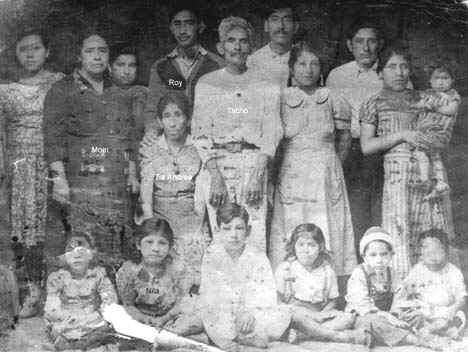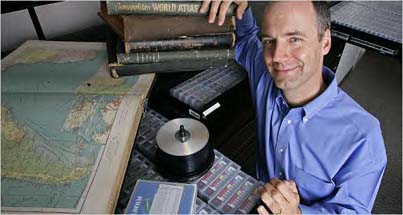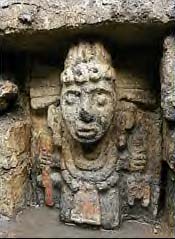|
Acknowledgments: Many thanks for the
permission, cooperation and assistance of Monsignor Lloyd Torgerson, Jim
Tuverson and Parish Administrator Mike Mottola in the extraction of Saint
Monica's Parish records.
St. Monica was established on June 28, 1886 by Bishop Francis Mora of the
Diocese of Monterey and Los Angeles. Father Patrick Hawe became the first
resident pastor of the new parish which was then located at Arizona and
3rd Streets in Santa Monica. At this time, Santa Monica was still an
unincorporated part of Los Angeles County and part of Ballona Township.
Saint Monica's Church moved to its present location at the corner of
California and 7th Streets in 1924.
The baptism registers were recorded in Spanish until 1902, when the parish
priest started to use English. While the recording of baptisms commenced
in 1886, Saint Monica did not begin recording marriage records until 1924.
Before that date, most people were married at mission churches in the
area. Luther Ingersoll's "Century History of the Santa Monica Bay
Cities" offered a detailed history of the church, starting with page
292.
The following baptisms are extracts from the baptism book of Saint
Monica's from 1886 to April 14, 1895. Only baptisms in which one or more
parent carried a Spanish surname were recorded. In these early days of
Saint Monica's Parish, Spanish surname baptisms outnumbered non-Hispanic
baptisms by about 10 to 1. The legitimacy of each child in relation
to his or her parents' marital status at the time of baptism is not being
made public at the request of the parish authorities.
Child: Hermengildo Sanchez
Date of baptism: May 30, 1886. . Date of birth: April 13, 1886
Parents: Francisco Sanchez and Cristiana Gusman
Godparents: Ignacio Baldes and Prudencio Oliverez
Child: Roque Marquez
Date of baptism: June 24, 1886. . Date of birth: March 25, 1886
Parents: Manuel Marquez and Dolores Urquidez
Godparents: Teofilo Leva and Sacramento Dolores
Child: Cecilia Aurelia Olivera
Date of baptism: June 27, 1886. . Date of birth: Feb. 1, 1886
Parents: Andres Olivera and Ynes Bojurkes
Godparents: Agustin Cota and Ulalio Bojurkes
Child: Juana Maria Baldez
Date of baptism: July 3, 1886. . Date of birth: July 3, 1886
Parents: Santos Baldez and Concepcion Barillas
Godparents: Miguel Higuero and Carmen Rodriguez
Child: Juana Josefa Baldez
Date of baptism: July 3, 1886. . Date of birth: July 3, 1886
Parents: Santos Baldez and Concepcion Barillas
Godparents: Miguel Higuero and Celedonia Farias
Child: Maria Valenzuela
Date of baptism: July 20, 1886. . Date of birth: July 20, 1888
Parents: Francisco Valenzuela and Gerarda Rios
Godparents: William Flores and Maria Garcia
Child: Clara Feliciana Silva
Date of baptism: July 22, 1886. . Date of birth: June 11, 1888
Parents: Berges Silva and Nana Rivera
Godparents: Luis Echardis and Clara Rivera
Child: Maria Gracia Bejar
Date of baptism: July 24, 1886. . Date of birth: Feb. 11, 1886
Parents: Dolores Bejar and Maria Jose
Godparents: Francisco Reyes and Maria Antonia de Marquez
Child: Isabel Gladys Rhodes
Date of baptism: July 15, 1886. . Date of birth: June 10, 1886
Parents: Thomas Rhodes and Josefa Bandini
Godparents: Juan Bandini and Jennie Winston
Child: Guillermo Farias
Date of baptism: July 24, 1886. . Date of birth: November 8, 1885
Parents: Andronico Farias and Flores de Maria Apelete
Godparents: Francisco Farias and Carmen Bilmar
Child: Maria Antonia Tapia
Date of baptism: Aug. 21, 1886. Date of birth: April 9, 1886
Parents: Francisco Tapia and Petra Herman
Godparents: Tomas Olivares and Maria Machado Olivarez
Child: Jose Antonio Olivera
Date of baptism: Aug. 29, 1886. Date of birth: May 10, 1886
Parents: Manuel Olivera and Cypriana Herman de Olivera
Godparents: Luis Olivares and Prudencia Olivares
Child: Manuel de Jesus Murre
Date of baptism: Sept. 1, 1886. Date of birth: July 26, 1886
Parents: Jose Murre and Eduviges Peña
Godparents: Hilaria Piña and Manuel Valenzuela
Child: Monica Alta Gracia Valenzuela
Date of baptism: Sept. 10, 1886. Date of birth: Oct. 4, 1885
Parents: Manuel Valenzuela and Modesta Bojorkes
Godparents: Valerio Bojorkes and Alta Gracia Piña
Child: Jose Alberto Cariado
Date of baptism: Sept. 6, 1886. Date of birth: June 6, 1886
Parents: Manuel Cariado and Merced Bejorina
Godparents: Bonifacio Marquez and Maria Antonia Marquez
Child: Francisco Olivera
Date of baptism: Sept. 10, 1886. Date of birth: Aug. 1886
Parents: Pedro Olivera and Trinidad Olivera
Godparents: Jose Juan Machado and Francisca Reyes
Child: Florencio Valenzuela
Date of baptism: Sept. 20, 1886. Date of birth: Aug. 22, 1886
Parents: Juan Valenzuela and Francisca Gomez
Godparents: Pascual Marquez and Michaela Reyes
Notes: Married to Luz Maria Hernandez on Sept. 7, 1951 at St.
Anne's Church, Santa Monica
Child: Martina Crisanta
Date of baptism: Oct. 11, 1886. Date of birth: June 8, 1886
Parents: Esperanza Cota and Jose Lopez
Godparents: Luis Lopez and Ascencion Machado
Child: Felipe Vicente Manriquez
Date of baptism: Nov. 13, 1886. Date of birth: Oct. 27, 1886
Parents: Felipe Manriquez and Atoche de Manriquez
Godparents: Jose J. Carillo and Francesca de Carillo
Child: Martina Crisanta Cota
Date of baptism: Oct. 11, 1886. Date of birth: June 8, 1886
Parents: Esperanza Cota and Jose Lopez
Godparents: Luis Lopez and Ascencion Machado
Child: Felipe Vicente Manriquez
Date of baptism: Nov. 13, 1886. Date of birth: Oct. 27, 1886
Parents: Felipe Manriquez and Atoche de Manriquez
Godparents: Jose J. Carillo and Francesca de Carillo
Child: Mateo Roberto Tapio
Date of baptism: Nov. 28, 1886. Date of birth: Sept. 11, 1886
Parents: Francisco Tapio and Petra Hernandez Tapio
Godparents: Ignacio Valdez and Fredelinda Chavez
Child: Florentina Dominguez
Date of baptism: Nov. 30, 1886. Date of birth: Sept. 14, 1886
Parents: Federico Dominguez and Paula Higuera
Godparents: Francisco Ranjel and Margarita Ranjel
Child: Nicolas Maria Pilar Marquez
Date of baptism: Dec. 20, 1886. Date of birth: Dec. 6, 1886
Parents: Bonifacio Marquez and Maria Antonia Olivares
Godparents: Tomas Olivares and Maria Machado
Child: Vicente Francisco Valenzuela
Date of baptism: Mar. 3, 1887. Date of birth: Jan. 20, 1886
Parents: Manuel Valenzuela and Modesta Bojorques
Godparents: Francisco Ranjel and Nicolasa Bojorques
Child: Angelita Valenzuela
Date of baptism: May 1, 1887. Date of birth: Oct. 12, 1886
Parents: Francisco Bonifacio Valenzuela and Francesca Reyes
Godparents: Jose Donougue and Geralda Rios
Child: Maria Dolores Amada Salido y Saenz
Date of baptism: May 2, 1887. Date of birth: April 10, 1887
Parents: Jesus Salido y Saenz and Amada Garcia
Godparents: Diego Alcala Machado and Angela Bojorquez
Child: Matilda Talamantes
Date of baptism: May 20, 1887. Date of birth: May 14, 1887
Parents: Felipe Talamantes and Carmen Lugo
Godparents: Manuel Machado and Felicitas Machado
Child: Virginia Rios
Date of baptism: May 21, 1887. Date of birth: Jan. 30, 1887
Parents: Roman Rios and Auriola Carillo
Godparents: Federico Peña and Matea Peña
Child: Maria Celestiana Chapman
Date of baptism: May 28, 1887. Date of birth: May 19, 1887
Parents: Juan Chapman and Maria Higuera
Godparents: Elpidio Higuera and Claudina Olivera de Higuera
Child: Jennie Louisa Eschardias
Date of baptism: May 31, 1887. Date of birth: Nov. 13, 1886
Parents: Louis Eschardias and Clara Ribeal
Godparents: Peter Eschardias and Mary Eschardias
Child: Juan Molino
Date of baptism: June 31, 1887. Date of birth: May 13, 1887
Parents: Evaristo Molino and Crialda Reyes
Godparents: Longa Machado and Rita Reyes
Child: Alfred Herren Aguirre
Date of baptism: July 5, 1887. Date of birth: April 27, 1887
Parents: Jose Antonio Aguirre and Leonarda Cardwell
Godparents: Jose de la Cruz Machado and Francesca Ferrer.
Child: Ramona Perez
Date of baptism: July 3, 1887. Date of birth: Dec. 25, 1885
Parents: Manuel Perez and Crispina Garcia.
Godparents: Barnabe Lelong and Juliana Ruiz
Notes: Married on Nov. 25, 1909 to Ysidro Ortiz, a native of Spain,
resident of Los Angeles, at St. Monica's Church, Santa Monica
Child: Audelia Lisado
Date of baptism: Aug. 7, 1887. Date of birth: May 23, 1887
Parents: Vicente Lisado y Pilar Blanco
Godparents: Pascual Marquez and Michaela Reyes de Marquez
Child: Perfecto Amando Marquez
Date of baptism: Aug. 7, 1887. Date of birth: April 17, 1887
Parents: Pascual Marquez and Miguela Reyes
Godparents: Francisco Aniceto Reyes and Margarita Silai
Child: Eusebio Chiros
Date of baptism: Aug. 21, 1887. Date of birth: Aug. 14, 1887
Parents: Angel Chiros and Francisca Garcia
Godparents: Vicente Lisado and Pilar Blanco
Child: Joaquin Angel Valdez
Date of baptism: Sept. 17, 1887. Date of birth: Aug. 2, 1887
Parents: Joaquin Valdez and Arcadia Sepulveda
Godparents: Santos Valdez and Concepcion Sepulveda
Child: Francisca Soledad Cruz
Date of baptism: Sept. 25, 1887. Date of birth: June 4, 1887
Parents: Juan Cruz and Maria Antonia Farias.
Godparents: Jose Farias and Leonidas Machado
Child: Maria de la Luz Castro
Date of baptism: Oct. 3, 1887. Date of birth: May 1, 1887
Parents: Miguel Castro and Refugio Yorba
Godparents: Jose Antonio Manriquez and Guadalupe Manriquez
Child: John Joseph Carrillo
Date of baptism: Oct. 5, 1887. Date of birth: Feb. 16, 1887
Parents: John Joseph Carillo and Francisca Roldan
Godparents: Peter R. Brady7 and Mary Ellen Brady
Child: Juan Machado
Date of baptism: Oct. 19, 1887. Date of birth: July 11, 1886
Parents: Federico Machado and Maria Hind
Godparents: Ricardo Machado and Manuela de Machado
Child: Jose Andronico Farias
Date of baptism: Nov. 27, 1887. Date of birth: Nov. 22, 1886
Parents: Adronico Farias and Maria Palateo
Godparents: Farias and Elvira Farias
Child: Alberto Garcia
Date of baptism: Nov. 27, 1887. Date of birth: Nov. 24, 1886
Parents: Nicolas Garcia and Juana Martinez
Godparents: George Claybrook and Susanna Claybrook
Child: Matoa Vicente Baldes
Date of baptism: Dec. 5, 1887. Date of birth: Sept. 20, 1887
Parents: Vicente Baldez and Dionisia de Valdez
Godparents: Manuel F. Corriel and Clemente de Coronel
Child: Maria de Jesus Donahue
Date of baptism: Dec. 18, 1887. Date of birth: Nov. 4, 1887
Parents: Joseph Donahue and Roberta Gomes
Godparents: Manuel Gomez and Maria Garcia
Child: Alberto Candido Delamantis
Date of baptism: Dec. 24, 1887. Date of birth: Oct. 3, 1887
Parents: Oligario Delamantes and Maria Ochoa
Godparents: Tranquilina Delamantes and Antonio Lisaldo
Child: Modesta Maud Flores
Date of baptism: Dec. 25, 1887. Date of birth: Feb. 6, 1887
Parents: William Flores and Mary Catherine Flores
Godparents: Juan Bautista Bandini and Arcadia Gaffey
Child: Margarita Maybell Flores
Date of baptism: Dec. 25, 1887. Date of birth: May 13, 1889
Parents: William Flores and Mary Catherine Flores
Godparents: Joseph Donahue and Roberta Gomez
Child: Pio de Jesus Olivera
Date of baptism: Jan. 12, 1888. Date of birth: July 11, 1887
Parents: Jesus Olivera and Ramona Cota
Godparents: Juan Lugo and Vicenta Machado de Lugo
Child: Manuel Cañonis
Date of baptism: Jan. 25, 1888. Date of birth: Dec. 23, 1887
Parents: Juan Cañonis and Maria Antonia Silva
Godparents: Ignacio Manriquez and Manuela Rangel
Child: George Washington Marcadio Contrerez
Date of baptism: Feb. 5, 1888. Date of birth: Jan. 2, 1888
Parents: Francisco Contrerez and Jennie Kennedy
Godparents: Vicente Lugo and Magdalena Machado
Child: Clara Arcadia Dowling
Date of baptism: Feb. 5, 1888. Date of birth: Jan. 10, 1888
Parents: James Dowling and Estela Carrillo
Godparents: John Joseph Carrillo and Arcadia Carillo de Smeur
Child: Ygnacio Floguencio Machado
Date of baptism: Feb. 7, 1888. Date of birth: Jan. 16, 1888
Parents: Antonio Machado and Manuela Valenzuela
Godparents: Andres Machado and Gracia Machado
Child: Maria Lugarda Delfina Baldez
Date of baptism: Feb. 17, 1888. Date of birth: Dec. 24, 1887
Parents: Santos Baldez and Concepcion Farias
Godparents: Ricardo Machado and Tomasa Talamantes
Child: Ezechial Manriquez
Date of baptism: Feb. 28, 1888. Date of birth: Feb. 20, 1888
Parents: Ygnacio Manriquez and Manuela Ranjel
Godparents: Juan Bejar and Encarnacion Urquera
Child: Manuel Pedro Valencia
Date of baptism: March 11, 1888. Date of birth: Jan. 31, 1888
Parents: Dolores Valencia and Juana Marquez
Godparents: Manuel Marquez and Dolores Horquirez
Child: William Francis Marquez
Date of baptism: April 4, 1888. Date of birth: Feb. 29, 1888
Parents: Bonifacio Marquez and Maria Antonia Olivarez
Godparents: William Francis Nordholl and Juana Marquez
Child: Uluccio Tranquelino Olivera
Date of baptism: April 7, 1888. Date of birth: Dec. 21, 1887
Parents: Andres Olivera and Ynes Bokorkes
Godparents: Agustin Cota and Ulalia Bokorkes
Child: Jose de Jesus Garcia
Date of baptism: April 8, 1888. Date of birth: April 5, 1888
Parents: Francisco Garcia and Isabel Garcia
Godparents: Guadalupe Reyes and Ramona Marquez
Child: Dataniel Ulalio Marquez
Date of baptism: April 8, 1888. Date of birth: Feb. 12, 1888
Parents: Rafael Marquez and Gloria Piña
Godparents: Angel Quiroz and Porfiria Garcia
Child: Jose del Carmen Valenzuela
Date of baptism: April 17, 1888. Date of birth: May 15, 1888
Parents: Jose Valenzuela and Rita Lugo
Godparents: Felipe Neri Valenzuela and Pilar Lugo
Child: Dolores Hilario Deotivis
Date of baptism: April 17, 1888. Date of birth: June 14, 1887
Parents: Leonivis Deotivis and Maria Salas
Godparents: Roman Horquirez and Maria Horquirez
Child: Manuel Duron
Date of baptism: April 29, 1888. Date of birth: Jan. 14, 1888
Parents: Manuel Duron and Maria Salazar
Godparents: Manuel Marquez and Raquela Marquez
Child: Maria Lugardo Delfina Valdez
Date of baptism: May 1, 1888. Date of birth: Dec. 24, 1887
Parents: Santos Valdez and Concepcion Farias
Godparents: Ricardo Machado and Tomasa Talamantes
Child: Alturo Tomaso Baldez
Date of baptism: May 2, 1888. Date of birth: Sept. 18, 1886
Parents: Teofilo Baldez and Maria Antonia Cota
Godparents: Francis Cota and Magdalena Cota
Child: Juliana Lelong
Date of baptism: May 12, 1888. Date of birth: Feb. 12, 1888
Parents: Barnabe Lelong and Juliana Ruiz
Godparents: Fermin Castillo and Florentina Botillier
Child: Martina Mason
Date of baptism: May 20, 1888. Date of birth: Jan. 31, 1887
Parents: Abel Mason and Flore Rubio
Godparents: Juan Bautista Decazau and Hermingilda Rubio
Child: Miguel Romero
Date of baptism: June 5, 1888. Date of birth: April 23, 1888
Parents: Diego Romero and Rosa Acuna de Romero
Godparents: Hilario Reyes and Rosa Piña
Child: Jose Martin Ruiz
Date of baptism: June 10, 1888. Date of birth: May 26, 1888
Parents: Martin Ruiz and Manuela Espinoza
Godparents: Guillermo Bokorkes and Jesus Velarde
Child: Francisco Chalmer
Date of baptism: June 10, 1888. Date of birth: Sept. 17, 1887
Parents: Vicente Chalmer and Laureana Machado
Godparents: Maria de Chalmer
Child: Alejandro Francisco Marques
Date of baptism: June 10, 1888. Date of birth: Apr. 24, 1888
Parents: Manuel Marques and Dolores Heijuires de Marques
Godparents: Guadalupe Reyes and Soila Reis
Notes: Married to Carmen Rios on December 1, 1909.
Child: Maria Julia Tapio
Date of baptism: June 23, 1888. Date of birth: Apr. 8, 1888
Parents: Antonio Tapio and Juana Belmal
Godparents: Jose Belmal and Carmen Belmal
Child: Pastor Garcia
Date of baptism: June 23, 1888. Date of birth: Apr. 15, 1888
Parents: Francisco Garcia and Refugio Flores
Godparents: Ramon Sepulveda and Delfina Henriquez
Child: Jose Dolores Valdez
Date of baptism: June 23, 1888. Date of birth: March 27, 1888
Parents: Joaquin Valdez and Arcadia Sepulveda
Godparents: Dolores Machado and Gregoria Leon
Child: Angel Venancio Ranjel
Date of baptism: July 22, 1888. Date of birth: May 18, 1888
Parents: Angel Ranjel and Edolinda Manriquez
Godparents: Emidio Manriquez and Guadalupe Manriquez
Child: Patricio Luis Tapio
Date of baptism: August 7, 1888. Date of birth: March 7, 1888
Parents: Francisco Tapio and Petra Fermen
Godparents: Francisco Figueroa and Manuela Cota
Child: Eliberto Pearson Armas
Date of baptism: August 11, 1888. Date of birth: August 1, 1888
Parents: Jose de Arnas and Maria Camarillo de Armas
Godparents: Juan Camarillo and Maria Dominguez de Pearson
Child: Tomasa Feliciana Olivera
Date of baptism: August 20, 1888. Date of birth: August 1, 1888
Parents: Adolfo Olivera and Dolores Herman
Godparents: Ignacio Baldez and Prudencia Olivera
Child: Ramon Valenzuela
Date of baptism: September 21, 1888. Date of birth: September 20, 1888
Parents: Juan Valenzuela and Trauista Gomes
Godparents: Guadalupe Reyes and Ramona Marquez de Reyes
Child: Joaquin Ciriaco Dominguez
Date of baptism: September 28, 1888. Date of birth: August 8, 1888
Parents: Jose Dominguez and Maria Lobo
Godparents: Pascuala Marquez and Dolores Hurquidez
Child: Pablo Marquez
Date of baptism: September 30, 1888. Date of birth: August 30, 1888
Parents: Felipe Marquez and Atoche Bokorkes
Godparents: Juan Farias and Elvira Farias
Child: Marcario Martin Olivera
Date of baptism: October 13, 1888. Date of birth: February 9, 1888
Parents: Manual Olivera and Cipriana Herman de Olivera
Godparents: Ignacio Valdez and Leonides Machado
Child: Juan Serafine Aralta
Date of baptism: October 16, 1888. Date of birth: Nov. 14, 1886
Parents: Luis Aralta and Teresa Donderez
Godparents: Juan Bejar and Encarnacion Higuera
Child: Joachin Antonio Lugo
Date of baptism: October 28, 1888. Date of birth: August 19, 1888
Parents: Mercurial Lugo and Rita Reyes
Godparents: Bernardino Machado and Erlinda Lugo
Child: Graciela Josefina Sepulvleda
Date of baptism: October 28, 1888. Date of birth: Aug. 27, 1888
Parents: Alejandro Sepulveda and Amada Arnas
Godparents: Jose Arnas and Maria Carmen de Arnas
Child: Emedio Francisco Higuera
Date of baptism: Nov. 24, 1888. Date of birth: August 5, 1888
Parents: Elpidio F. Higuera and Claudina Olivera
Godparents: Francisco Higuera and Josefa Materin
Child: Candida Francisca Marquez
Date of baptism: December 30, 1888. Date of birth: Oct. 3, 1888
Parents: Pascual Marquez and Michaela Reyes
Godparents: Juan Francisco Figueroa and Manuela Cota de Figueroa
Child: Maria Panfila Rios
Date of baptism: Feb. 20, 1889. Date of birth: June 10, 1888
Parents: Hilario Rios and Pesitana Piña
Godparents: Escalastico Barrerus and Josefa Lugo
Child: Alberto Lisaldo
Date of baptism: March 1, 1889. Date of birth: December 27, 1888
Parents: Vicente Lisaldo and Pilar Blanco
Godparents: Henry Katz and Ulalia Bohorkes
Child: Juan Salgado
Date of baptism: March 2, 1889. Date of birth: October 14, 1888
Parents: Juan Salgado and Francisca Ramirez
Godparents: Juan Batista Bandini and Atala Carrillo
Child: Manuela Marina Manriquez
Date of baptism: March 20, 1889. Date of birth: January 14, 1889
Parents: Ignacio Manrieuz and Manuela Ranjel
Godparents: Tranquilina Talamantes and Delfina Talamantes
Child: Jose de Jesus Lopez
Date of baptism: March 23, 1889. Date of birth: January 29, 1889
Parents: Jose de Jesus Lopez and Guadalupe Dominguez
Godparents: William Flores and Margarito Flores
Child: Magin Alfred Farias
Date of baptism: March 30, 1889. Date of birth: August 19, 1888
Parents: Andronico Farias and Flora Apalate
Godparents: Francisco Bokorkes and Rosanna Farias
Child: Elizar Molina
Date of baptism: April 7, 1889. Date of birth: February 5, 1889
Parents: Evaristo Molino and Eliza Reyes
Godparents: Vicente Lugo and Francisco Reyes
Child: Eulogio Leonardo Stuart
Date of baptism: April 14, 1889. Date of birth: March 9, 1889
Parents: Juan Stuart and Venderanda Lugo
Godmother: Josefa Lugo
Child: Domingo Olivares
Date of baptism: April 25, 1889. Date of birth: December 20, 1888
Parents: Adolfo Olivarez and Dolores Herman
Godparents: Tomas Olivarez and Mariana Chavez
Child: Francisco Emidio Dominguez
Date of baptism: May 12, 1889. Date of birth: April 23, 1889
Parents: Federico Dominguez and Paula Higuera
Godparents: Mirabel Machado and Salome Machado
Child: Dominga de Alcanzar Donahue
Date of baptism: May 15, 1889. Date of birth: May 12, 1889
Parents: Jose Donahue and Roberta Gomes
Godparents: Bonifacio Marquez and Maria Gracio Gomes
Child: Federico Casimiro Racamante
Date of baptism: June 9, 1889. Date of birth: March 4, 1889
Parents: Felipe Racamonte and Guadalupe Guerrero
Godparents: Alejandro Racamante and Margarita Sarez
Child: Octavius Carillo
Date of baptism: Sept. 18, 1889. Date of birth: July 3, 1889
Parents: John J. Carillo and Francisca Boldan
Godparents: Estanislao de Urquiza and Consuelo Celis Urquiza
Child: Alfonso Machado
Date of baptism: October 5, 1889
Parents: Ricardo Machado and Erlinda Romero
Godparents: John Carillo and Manuela Alta Mirano de Machado
Child: Maura Martha Talamantes
Date of baptism: October 21, 1889. Date of birth: July 29, 1889
Parents: Ologario Talamantes and Maria Ochoa
Godparents: Pedro Manriquez and Ascencion Machado
Child: Juan Francisco Antonio Chapman
Date of baptism: October 26, 1889. Date of birth: June 12, 1889
Parents: John P. Chapman and Maria Higuera
Godparents: Bernardo J. Higuera and Rosario Higuera
Child: Juan de Mato Abril
Date of baptism: October 31, 1889. Date of birth: Feb. 8, 1889
Parents: Manuel Abril and Refugio Yorban
Godparents: Miguel Higuero and Seladonia Farias
Child: Candida Modesta
Date of baptism: November 10, 1889. Date of birth: Sept. 3, 1889
Parents: Rafael Marquez and Hilaria Pina
Godparents: David Valenzuela and Modesta Bojorquez
Child: Felipe Bernardino Cota
Date of baptism: December 16, 1889. Date of birth: May 26, 1888
Parents: Jose Lopez and Esperanza Cota
Godparents: Francisca Figueroa and Manuela Cota de Figueroa
Child: Maria Roque Valenzuela
Date of baptism: January 5, 1890. Date of birth: Nov. 26, 1889
Parents: Francisco Bonifacio Valenzuela and Andrea Rios
Godparents: Henry Boehme and Mary Bochme
Child: Carmen Rios
Date of baptism: January 5, 1890. Date of birth: Nov. 9, 1889
Parents: Roman Rios and Auriola Carrillo (difunta)
Godparents: Eusebio Carrillo and Frances Marquez
Marriage notation: Married Francisco Marquez on Dec. 1, 1909 in St. Monica’s
Church by Rev. J.A. O’Callaghan
Child: Teodoro Francisco Billa
Date of baptism: January 10, 1890. Date of birth: Nov. 9, 1989
Parents: Mamerto Billa and Cirin Cruz
Godparents: Escolastico Barrero and Clemente Cruz de Coronel
Child: Rafael Bernardo Lalong
Date of baptism: January 15, 1890. Date of birth: July 24, 1889
Parents: Bernalel Lalong and Juliana Ruiz
Godparents: Juan Hordoquia and Antonia Hordoquia
Child: Ernest Teofolo Vashe
Date of baptism: January 26, 1890. Date of birth: Nov. 17, 1889
Parents: Adolph Vashe and Frances Pelissier
Godparents: Anita Pelissier and Adolph Vashe
En lieu of Ernest Pelissier
Child: Maria Sarajosa Garino
Date of baptism: January 26, 1890. Date of birth: Dec. 3, 1889
Parents: Francisco Garcia and Refugio Gonzalez
Godparents: Henry Slert and Juana Marquez
Child: Andres Pedro Ramon Machado
Date of baptism: January 27, 1890. Date of birth: Oct. 19, 1889
Parents: Diego Alcala Machado and Sinaida Chavez
Godparents: Andres Machado and Gracia Talamantes de Machado
Child: Victoria Sepulveda
Date of baptism: Feb. 2, 1890. Date of birth: Dec. 23, 1889
Parents: Ramon Sepulveda and Isabel Garcia
Godparents: Jose Manriguez and Porfidia Garcia
Child: Magdalena Errata
Date of baptism: Feb. 24, 1890 . Date of birth: Feb. 23, 1890
Parents: Louis Errata and Teresa Dontera
Godparents: Vicente Valenzuela, in place of Manuel Ignacio Higuero, and
Maria de Jesus Roche
Child: Francisco Lugo
Date of baptism: March 11, 1890 . Date of birth: Dec. 27, 1889
Parents: Mercurial Lugo and Rito Reyes
Godparents: Jose Maria Lugo and Francisco Reyes
Child: Ernesto Pedro Machado
Date of baptism: March 29, 1890 . Date of birth: Oct. 19, 1889
Parents: Juan Machado and Manuela Cota
Godparents: Bernardino Machado and Ynes Yorro
Child: Manuel Perez
Date of baptism: March 30, 1890. Date of birth: March 24, 1889
Parents: Manuel Perez and Crispina Garcia
Godparents: Carlos Bojorques and Juliano Garcia
Child: Geraldo Olivares
Date of baptism: April 15, 1890. Date of birth: March 4, 1890
Parents: Andres Olivares and Ynes Bojorques
Godparents: Geraldo Bojorquez and Ullalia Bojorquez
Child: Jose Ramon Ruiz
Date of baptism: May 11, 1890. Date of birth: March 24, 1890
Parents: Martin Ruiz and Manuela de Ruiz
Godparents: Francisco Bojorquez and Sacramento de Armento
Child: Juan Eusebio Farias
Date of baptism: May 17, 1890. Date of birth: April 21, 1890
Parents: Jose Maria Farias and Guadalupe Chavez
Godparents: Presentacion Chavez and Eliza Machado
Child: Maria Evalinda Rocha
Date of baptism: May 17, 1890. Date of birth: April 17, 1890
Parents: Basilio Rocha and Maria Gomez
Godparents: Jose Piña and Antonia Levis
Child: Juan Rodriguez
Date of baptism: May 27, 1890. Date of birth: Jan. 26, 1890
Parents: Juan Rodriguez and Pilar Roche
Godparents: Juan Arnas and Ascencion Roche
Child: Porfirio Elpidio Eugenio Higuera
Date of baptism: June 1, 1890. Date of birth: February 26, 1890
Parents: Echides Higuera and Claudina Olvera
Godparents: Bernardo Higuera and Evangeline Vasquez
Child: Atalea Duron
Date of baptism: June 15, 1890. Date of birth: Nov. 27, 1889
Parents: Manuel Duron and Maria Salazar
Godparents: Manuel Marquez and Dolores Urquirez
Child: Alberto Reynold
Date of baptism: June 29, 1890. Date of birth: June 29, 1885
Parents: William Reynold and Eliza Muños
Godparents: Guadalupe Reyes and Ramona Reyes
Child: Julia Patricia Belnal y Talamantes
Date of baptism: Aug. 3, 1890. Date of birth: March 17, 1890
Parents: Francisco Belnal and Tranquilina Talamantes
Godparents: Antonia Maria Tapia and Juana Belmal de Tapia
Child: Amalia Medarda Tapia
Date of baptism; Aug. 3, 1890. Date of birth: June 8, 1890
Parents: Antonio Maria Tapia and Juan Belmal.
Godparents: Vicente Talamantes and Carmen Belmal de Talamantes
Child: Andrea Isabel Muñe
Date of baptism: August 9, 1890. Date of birth: April 9, 1890
Parents: Jose Muñe and Eduvigis Piña
Godparents: Pablo Rios and Carmen Piña
Child: Marcial Arturo Valenzuela
Date of baptism: August 11, 1890. Date of birth: June 30, 1890
Parents: Juvencio Valenzuela and Margarita Reyes
Godparents: Manuel Machado and Guadalupe Perez
Child: Pedro Alfonso Baldez
Date of baptism: August 18, 1890. Date of birth: Aug. 1, 1890
Parents: Santos Baldez and Concepcion Farias
Godparents: Tranquilino Talamantes and Delfina Talamantes
Child: Vibiana Baldez
Date of baptism: August 18, 1890. Date of birth: August 1, 1890
Parents: Santos Baldez and Concepcion Farias
Godparents: Pedro Manriquez and Guadalupe Manriquez
Child: Jose Alberto Valenzuela
Date of baptism: August 19, 1890. Date of birth: June 20, 1890
Parents: Francisco Valenzuela and Refugio Coronel
Godparents: Jose Garcia and Francisca Alvarez
Child: Laura Salgado
Date of baptism: Aug. 24, 1890. Date of birth: June 6, 1890
Parents: Juan Salgado and Francisca Ramirez
Godparents: Bernardino Machado and Candelaria Machado
Child: Claudia Ultirez
Date of baptism: Sept. 18, 1890. Date of birth: June 17, 1890
Parents: Consonis Ultirez and Caesaria Dalaudil
Godparent: Teresa Baldez
Child: Cornelia Victoria Cota
Date of baptism: Sept. 27, 1890. Date of birth: Sept. 16, 1890
Parents: Francisco Cota and Lucia Figueroa
Godparents: Macedonio Figueroa and Gertrudis Figueroa
Child: Ramona Tomasa Salazar
Date of baptism: Sept. 28, 1890. Date of birth: May 8, 1890
Parents: Luis Salazar and Francisca Rios
Godparents: Pablo Rios and Rosa Peña
Child: Jose Maria Cayetano Lugo
Date of baptism: October 2, 1890. Date of birth: Aug. 19, 1890
Parents: Jose Maria Lugo and Elvira Padillos
Godparents: Jose Padillos and Vicente Machado
Child: Jose Guadalupe Tautino
Date of baptism: October 6, 1890. Date of birth: Dec. 12, 1889
Parents: Lenidez Tautino and Maria Salvez
Godparents: Ismael Marquez and Anastacia Estrudis
Child: Louis Rey Marquez
Date of baptism: October 11, 1890. Date of birth: August 24, 1890
Parents: Manuel Marquez and Dolores Urtirez
Godparents: Joaquin Uranquiz and Ramona Marquez
Child: Jose Julian Cruz
Date of baptism: October 15, 1890. Date of birth: Sept. 24, 1890
Parents: Juan Cruz and Maria Antonia Farias
Godparents: Juan Farias and Margarita Machado
Child: Ramon Norito Romero
Date of baptism: October 29, 1890. Date of birth: Sept. 3, 1890
Parents: Clemente Romero and Carmen Olivas
Godparents: Cristobal Chavez and Sostenes Chavez
Child: Maria Estefana Machado
Date of baptism: November 2, 1890. Date of birth: Aug. 24, 1890
Parents: Antonio Machado and Manuela Valenzuela
Godparents: Ramon Valenzuela and Ascencion Serau
Child: Dolores Contrerez
Date of baptism: Nov. 16, 1890. Date of birth: June 18, 1890
Parents: Frances Contrerez and Jane Kennedy
Godparents: Bernardino Roche and Carmelita Contrerez
Child: Maria Felipe Quiros
Date of baptism: Nov. 23, 1890. Date of birth: May 4, 1890
Parents: Angel Quiros and Francisca Garcia
Godparents: Felipe Manriquez and Maria Toche
Child: Gregoria Adelina Manriquez
Date of baptism: Nov. 23, 1890. Date of birth: Sept. 21, 1890.
Parents: Felipe Manriquez and Maria Atoche Boroquez
Godparents: Jaochin Branconi and Adelfina Henriquez
Child: Jacinto Talamante
Date of baptism: Dec. 27, 1890. Date of birth: Feb. 10, 1890
Parents: Vicente Talamantes and Carmen Bermal
Godparents: Vicente Lugo and Ninfa Talamantes
Child: Juana Saragosa Spencer
Date of baptism: Dec. 25, 1890. Date of birth: June 14, 1890
Parents: Joseph Spencer and Cleotilda Chavez
Godparents: Jose Antonio Machado and Manuela Valenzuela de Machado
Child: Petra Reyes
Date of baptism: January 17, 1891. Date of birth: May 30, 1890
Parents: Hilario Reyes and Presciliana Piña
Godparents: Catarino Piña and Alta Gracia Piña
Child: Pedro Tomas Sepulveda
Date of baptism: March 1, 1891. Date of birth: January 18, 1891
Parents: Ramon Sepulveda and Isabel Garcia
Godparents: Pedro Manriquez and Dolores Valdez
Child: Julian Gerardo Soto
Date of baptism: March 22, 1891. Date of birth: Jan. 9, 1891
Parents: Pablo Soto and Maria Jesus Harro
Godparents: Federico Sumreel and Margarit Harro
Child: Juan Jose Flores
Date of baptism: March 28, 1891. Date of birth: March 4, 1891
Parents: William Flores and Margarita Gomez
Godparents: John J. Carrillo and Francisca Carrillo
Child: Alonzo Bojorquez
Date of baptism: April 12, 1891. Date of birth: Nov. 21, 1890
Parents: Valerio Bojorquez and Francisca Reyes
Godparents: Pascual Marquez and Francisca Lugo
Child: Guadalupe Farias
Date of baptism: April 23, 1891. Date of birth: Dec. 12, 1890
Parents: Juan Cruz and Antonia Farias
Godparents: Ignacio Valdez and Maria Machado de Olivares
Child: Manuel de Jesus Valenzuela
Date of baptism: May 1, 1891. Date of birth: Dec. 25, 1890
Parents: Juan Valenzuela and Transita Gomez
Godparents: Manuel Marquez and Dolores Urquires
Child: Andres Francisco Tapia
Date of baptism: May 8, 1891. Date of birth: Feb. 4, 1891
Parents: Francisco Tapia and Petra Jerman
Godparents: Ramon Machado and Margarita Chavez
Child: Teodoro Benito Billa
Date of baptism: May 15, 1891. Date of birth: April 6, 1891
Parents: Mamerto Billa and Cecilia Cruz
Godparents: Refugio Bojorquez and Martina Bojorquez
Child: Fernando Federico Bull
Date of baptism: May 23, 1891. Date of birth: May 12, 1891
Parents: Roberto Wilcox Bull and Eliza Gonzalez
Godparents: Federico Peña and Matea Peña
Child: Jose Juan Badillo
Date of baptism: May 31, 1891. Date of birth: July 16, 1890
Parents: Pedro Badillo and Vicenta "Chapman
Godparents: Lauriano Machado and Maura Chapman de Machado
Child: Palmira Molina
Date of baptism: May 31, 1891. Date of birth: Feb. 27, 1891
Parents: Evaristo Molina and Geralda Reyes
Godparents: Manuel Machado and Mary Reyes
Child: Aurelia Cecilia Ranjel
Date of baptism: June 4, 1891. Date of birth: April 5, 1891
Parents: Angel Ranjel and Evalinda Manriquez
Godparents: Jesus Ranjel and Maria Lara
Child: Federico Rosauro Marquez
Date of baptism: June 7, 1891. Date of birth: April 25, 1891
Parents: Bonifacio Marquez and Maria Ana Olivarez
Godparents: Isidro Reyes and Carmen de Reyes
Child: Juan Marquez
Date of baptism: June 14, 1891. Date of birth: June 12, 1891
Parents: Rafael Marquez and Hilaria Piño
Godparents: Manuel Valenzuela and Pilar Blanco
Child: Maricel de Jesus Marquez
Date of baptism: June 14, 1891.
Parents: Juan Marquez and Hilarioa Pina
Godparents: Antonio Ochoa and Andrea Rios de Valenzuela
Child: Eugenio Baldez
Date of baptism: July 4, 1891. Date of birth: March 21, 1891
Parents: Teofilo Baldez and Maria Antonia Cota
Godparents: Francisco Cota and Ermandine Gates
Child: Francisca Josefa Lopez
Date of baptism: July 5, 1891. Date of birth: January 14, 1891
Parents: Jose de Jesus Lopez and Guadalupe Dominguez
Godparents: Andres Dominguez and Josefa Valenzuela
Child: Juana Ynez Higuera
Date of baptism: July 12, 1891. Date of birth: May 23, 1891
Parents: Elpidio Higuero and Claudina Olivera
Godparents: Esteban Higuera and Maria Higuera de Chapman
Child: Maria Rosa Oril
Date of baptism: July 22, 1891. Date of birth: August 30, 1890
Parents: Manuel Oril and Refugio Yorba
Godparents: Guadalupe Ruiz and Dolores Valdez
Child: Nieves Dolorato Marquez
Date of baptism: August 5, 1891. Date of birth: August 2, 1891
Parents: Pascual Marquez and Michaela Reyes
Godparents: Bianchomi Govanelino and Julio James
Child: Juana Rita Talamantes
Date of baptism: Sept. 5, 1891. Date of birth: March 30, 1891
Parent: Oligario Talamantes
Child: Felipa Buelna
Date of baptism: September 6, 1891. Date of birth: March 25, 1891
Parents: Cayetano Buelna and Casilda Aguilar
Child: Juan Refugio Lugo
Date of baptism: September 13, 1891. Date of birth: July 4, 1891
Parents: Marcurial Lugo and Rita Reyes
Godparents: Juan Lugo and Francisca Lugo
Child: Jose Eugenio Farias
Date of baptism: September 20, 1891. Date of birth: July 2, 1891
Parents: Jose Maria Farias and Guadalupe Chavez
Child: Venancia Rosaura Figueroa
Date of baptism: September 20, 1891. Date of birth: May 18, 1891
Parents: Juan Francisco de Figueroa and Manuela Cota
Godparents: Jose de la Luz Machado and Gertrudis Figueroa
Child: Robert Anthony Hernandez
Date of baptism: September 27, 1891. Age: 13 years old.
Parents: Antonio Hernandez and Maria de la Paz
Godparents: Federico Peña and Matea Peña
Child: Crisostomo Garcia
Date of baptism: September 28, 1891. Date of birth: January 27, 1890.
Parents: Nicolas Garcia and Juana de Garcia
Godparents: Federico Peña and Soila Peña
Child: Wencesla Bibiana Cota
Date of baptism: September 29, 1891. Date of birth: Sept. 28, 1891.
Parents: Augustin Cota and Ynez de Cota
Godparents: Macedonio Figueroa and Gertrudis Figueroa
Child: Juan Olviarez
Date of baptism: October 10, 1891. Date of birth: April 15, 1891.
Parents: Adolfo Olivarez and Dolores German de Olivarez
Godparent: Martina Machado
Child: Prudencio Luis Olivera
Date of baptism: October 24, 1891. Date of birth: May 9, 1891.
Parents: Manuel Olivera and Cipriana Jerman
Godparent: Carlos Valdez
Child: Constancia Alazar
Date of baptism: November 15, 1891. Date of birth: October 9, 1891.
Parents: Luiz Alazar and Francesca Rios
Godparents: Julian Gastel and Martina Machado
Child: ------ Salgado
Date of baptism: November 22, 1891. Date of birth: July 25, 1891.
Parents: Juan Salgado and Frances Ramirez
Godparents: Amado Ramirez and Lizzie Thompson
Child: Gracia Saragosa Placida Machado
Date of baptism: November 22, 1891. Date of birth: Oct. 5, 1891.
Parents: Diego Keale Machado and Senada Chavez
Godparents: Antonio Machado and Manuela Valenzuela
Child: Clotilda Tapia
Date of baptism: December 6, 1891. Date of birth: June 3, 1891
Parents: Antonio Maria Tapia and Juana Belmal
Godparents: Dolores Machado and Gregoria Leonda Machado
Child: Herminia Rios
Date of baptism: December 15, 1891. Date of birth: October 15, 1891
Parents: Ramon Rios and Leola Carrillo
Godparents: Ortero Verdugo and Amelia Manriquez
Child: Luciana Romero
Date of baptism: January 8, 1892. Date of birth: January 7, 1891
Parents: Clemente Romero and Carmen Romero
Godparents: Caterino Piña and Carmen Piña
Child: Vibiana Valdez
Date of baptism: January 15, 1892. Date of birth: December 27, 1891.
Parents: Santos Valdez and Concepcion F. de Valdez
Godparents: Jesus Saenz and Rosana M. de Farias
Child: Juana Valdez
Date of baptism: January 15, 1892. Date of birth: December 27, 1891
Parents: Santos Valdez and Concepcion F. de Valdez
Godparents: Jesus Saenz and Arnada G. de Saenz
Child: Victoria Adela Gomez
Date of baptism: January 15, 1892. Date of birth: January 2, 1892
Parents: Victoriano Gomez and Gerarda Rios de Gomez
Godparents: Hilario Rios and Maria Garcia
Child: Eliador Valenzueal
Date of baptism: February 15, 1892. Date of birth: February 11, 1892
Parents: Juvencio Valenzuela and Margarita Reyes
Godparent: Felipe Manriquez
Child: Jose Maria Joaquin Innocento Bojorquez
Date of baptism: February 16, 1892. Date of birth: December 24, 1891.
Parents: Refugio Bojorquez and Martina Guardo
Godparents: Juan Bojorquez and Maria Bojorquez
Child: Lucia Olivero
Date of baptism: March 5, 1892. Date of birth: November 13, 1891
Parents: Andres Olivero and Ynes Bojorquez
Godparents: Pascual Marquez and Maria Valenzuela
Child: Candelaria Esperanza Ortega
Date of baptism: March 13, 1892. Date of birth: February 2, 1892
Parents: Carlos Ortega and Juana Botellier
Godparents: Francisco Botellier and Florentina de Botiller
Child: Juan de Dios Barrero
Date of baptism: April 10, 1892. Date of birth: February 8, 1892.
Parents: Escolastico Barrero and Josefa Barrero
Godparents: Eugene Plummer and Maria Amparo Plummer
Child: Jose Slert
Date of baptism: April 12, 1892. Date of birth: March 29, 1892
Parents: Leonardo Slert and Vina Lugo
Godparents: John Scotto and Susana Scotto
Child: Juan Timoteo Abril
Date of baptism: April 17, 1892. Date of birth: Jan. 25, 1892.
Parents: Manuel Abril and Refugio Yorba
Godparents: Manual Marquez and Dionisia Garcia
Child: Herminia Sepulveda
Date of baptism: May 1, 1892. Date of birth: February 27, 1892
Parents: Ramon Sepulveda and Isabel Garcia
Godparents: Francisco Emidio Reyes and Guadalupe Morales
Note: Married on 4-27-1913 Bernardino Castillo of Torreon at Los Angeles
BMV Church.
Child: Rafael Marquez
Date of baptism: May 6, 1892. Date of birth: November 18, 1891
Parents: Rafael Marquez and Isabel Kilgore
Godparents: Vicente Machado and Rafael Marquez
Child: Antonino Valenzuela
Date of baptism: May 11, 1892. Date of birth: May 11, 1892
Parents: Juan Valenzuela and Transita Gomez
Godparents: Rodolfo Gomez and Alta Gracia Piña
Child: Carlota Badillo
Date of baptism; May 17, 1892. Date of birth: March 11, 1892.
Parents: Pedro Badillo and Delfina Enriquez
Godparents: Pascual Marquez and Micaela Marquez
Child: Ricardo Francisco Machado
Date of baptism: June 19, 1892. Date of birth: March 8, 1892
Parents: Ricardo Machado and Erlinda Romero
Godparents: Juan Francisca Figueroa and Manuela Cota
Child: Juan Francisco Lopez
Date of baptism: June 19, 1892. Date of birth: Feb. 8, 1892
Parents: Jose Lopez and Esperanza de Lopez
Godparents: Francisco Cota and Ramona de la Guerra
Child: Maria de Pilar Sierras
Date of baptism: July 1, 1891. Date of birth: Aug. 5, 1891
Parents: Juan Sierras and Dolores Alvarez
Godparents: Francisco Rios and Pilar Blanco.
Child: Juan Luariano Machado
Date of baptism: July 28, 1892. Date of birth: May 7, 1892.
Parents: Lauriano Machado and Maria Lugo de Machado
Godparents: Juan Chapman and Maria Higuera de Chapman
Child: Vicente Margarita Lesillos
Date of baptism: August 21, 1892. Date of birth: June 10, 1892
Parents: Vicente Lesillos and Esperanza Isabel
Godparents: Norberto Gusman and Asuncion Roche
Child: Henrique Lugo
Date of baptism: August 28, 1892. Date of birth: July 30, 1892.
Parents: Jose Maria Lugo and Elvira Farias
Godparents: Francisco Farias and Delfina Talamantes
Child: Aurelia Simona Moñe
Date of baptism: December 11, 1892. Date of birth: June 11, 1892.
Parents: Jose Moñe and Eduviges Piña
Godparents: Catharino Piña and Carmen Piña
Child: Maria Petra Teresa Saens
Date of baptism: October 20, 1892. Date of birth: June 29, 1892.
Parents: Jesus Saens and Amada Garcia
Godparents: Manuel Carisosa and Evangeline Vasquez
Child: Jose Ramon Caranzo
Date of baptism: November 20, 1892. Date of birth: October 22, 1892.
Parents: Jose Caranzo and Francisca Rodriguez
Godparents: Ramon Urquidez and Dolores Urquides
Child: Guadalupe de Mercedes Moralis[sic]
Date of baptism: December 11, 1892. Date of birth: Dec. 11, 1892.
Parents: Jose Allis and Guadalupe Morales
Godparent: Mercedes Higuera
Child: Rafael Utimeo Morales
Date of baptism: January 12, 1893. Date of birth: Jan. 9, 1893.
Parents: Feliciano Morales and Martina Machado
Godparents: Maximiliano Arze and Hilaria Piña
Child: Aurelia Vasquez
Date of baptism: February 17, 1893. Date of birth: Dec. 10, 1892.
Parents: Ismael Marquez (or Vasquez ?) and Francisca Reyes
Godparents: Luis Henriquez and Amelia Henriquez
Child: Ramon Presentacion Ruiz
Date of baptism: January 15, 1893. Date of birth: Nov. 21, 1892.
Parents: Martin Ruiz and Manuela Espinoza
Godparents: Refugio Bojorquez and Maria de Los Angeles Bojorquez
Child: Zoila Dolores Ruiz
Date of baptism: February 25, 1893. Date of birth: September 5, 1892.
Parents: Pablo Rios and Rosa Piña
Godparents: Austin Machado and Alta Gracia Piña
Child: Maria Antonia Bernardilo Martina Cota
Date of baptism: March 3, 1893. Date of birth: Feb. 6, 1893.
Parents: Augustin Cota and Ynes Figueroa
Godparents: Francisco Cota and Ramona Olivera
Child: Rosana Albertino Rios
Date of baptism: March 11, 1893. Date of birth: July 26, 1892
Parents: Hilario Rios and Presciliana Piña
Godparents: Jose Machado and Petra Lopez
Child: Maria Sabina Villa
Date of baptism: March 2, 1893. Date of birth: December 30, 1892.
Parents: Mamerto Villa and Seria Cruz
Godparents: Francesca Martinez and Jesus Eredia
Child: Ana Maria Magdalena Olivera
Date of baptism: April 9, 1893. Date of birth: July 23, 1892.
Parents: Manuel Olivera and Cipriano Jerman
Godparents: Augustin Machado and Irena Machado
Child: Hermangilda Marquez
Date of baptism: April 14, 1893. Date of birth: April 12, 1893.
Parents: Pascual Marquez and Micaela Reyes de Marquez
Godparent: Pilar Blanco
Child: Francisco Rios
Date of baptism: April 16, 1893. Date of birth: January 6, 1893
Parents: Roman Rios and Auria Carrillo
Godparents: Luis Olivarez and Felipe Marquez
Child: Luis Valenzuela
Date of baptism: April 24, 1893. Date of birth: Jan. 6, 1893
Parents: Juvencio Valenzuela and Margarita Valenzuela
Godparents: Luis Olivarez and Felipa Marquez.
Child: Amelia Juana Marquez
Date of baptism: May 1, 1893. Date of birth: Feb. 8, 1893
Parents: Ismael Marquez and Francisca Valenzuela
Godparents: Francisco Emidio Manriquez and Alta Gracia Pino
Child: Maria de Jesus Bojorquez
Date of baptism: May 7, 1893. Date of birth: March 20, 1893.
Parents: Refugio Bojorquez and Martina Garle
Godparents: Guillermo Bojorquez and Maria de los Angeles Bojorquez
Child: Lazaro Epiminondas Higuera
Date of baptism: May 7, 1893. Date of birth: Dec. 17, 1892.
Parents: Elpidio T. Higuera and Claudina O. de Higuera
Godparents: Esteban R. Higuera and Angelista Bari
Child: Henriquez Lopez
Date of baptism: May 13, 1893. Date of birth: Jan. 11, 1893.
Parents: Jesus Lopez and Guadalupe Dominguez
Godparents: Pascual Marquez and Dolores Urquirez
Child: Audelina Slert
Date of baptism: May 13, 1893. Date of birth: Feb. 13, 1893.
Parents: Henrique Slert and Juana Marquez
Godparents: Miguel Marquez and Fuña Marquez
Child: Matias Ranjel
Date of baptism: May 14, 1893. Date of birth: March 24, 1893.
Parents: Francisco Ranjel and Ulalia Bojorquez
Godparents: Jesus Ranjel and Maria Prios
Child: Carlota Ricarda Tapia
Date of baptism: June 11, 1893. Date of birth: April 11, 1893.
Parents: Antonia Maria Tapia and Juana Belmal
Godparents: Jose Maria Farias and Guadalupe Chavez
Child: Petra Hortensia Cruz
Date of baptism: June 11, 1893. Date of birth: April 4, 1893.
Parents: Jesus Cruz and Perseverancia Machado
Godparents: Manuel Ignacio Higuera and Incarnacion Higuera
Child: Arturo Cota
Date of baptism: June 17, 1893. Date of birth: Dec. 17, 1892.
Parents: Teofilo Cota and Erlinda Lopez
Godparents: Juan Machado and Manuela Cota
Child: Maria Bernarda Cruz
Date of baptism: June 18, 1893. Date of birth: Oct. 22, 1892.
Parents: Juan Cruz and Antonia Farias
Godparents: Marcos Chavez and Guadalupe Chavez de Farias
Child: Melitone Eliseo Farias
Date of baptism: June 18, 1893. Date of birth: March 10, 1892.
Parents: Jose Maria Farias and Guadalupe Chavez
Godparents: Andres F. Machado and Margarito Chavez
Child: Aurora Gonsalez
Date of baptism: July 15, 1893. Date of birth: Nov. 14, 1892.
Parents: Tiburcio Gonzalez and Francisca Verman
Godparents: Andronico Farias and Florida Farias
Child: Ramon Vochet
Date of baptism: July 23, 1893.
Parents: Ramon Vochet and Hilaria Piña
Godparents: Pedro Olivero and Trinidad Estrada
Child: Alberto Valenzuela
Date of baptism: July 23, 1893. Date of birth: June 30, 1893.
Parents: Francisco Valenzuela and Refugio Valenzuela
Godparents: Andres Ranjel and Maria Ranjel
Child: Ireneo Muñe
Date of baptism: August 6, 1893. Date of birth: July 5, 1893.
Parents: Jose Muñe and Eduviges Piña
Godparents: Catharino Piña and Alta Gracia Piña
Child: Felicidad Abril
Date of baptism: August 6, 1893. Date of birth: March 2, 1893.
Parents: Manuel Abril and Refugio Yorba
Godparents: Jose Muñe and Eduviges Piña
Child: Estefana Sepulveda
Date of baptism: August 12, 1893. Date of birth: April 3, 1893.
Parents: Ramon Sepulveda and Isabel Garcia
Godparents: Miguel Marquez and Antonia Olivares de Marquez
Child: Micaela Refugio Marquez
Date of baptism: August 20, 1893. Date of birth: July 4, 1893.
Parents: Manuel Marquez and Dolores de Marquez
Godparents: Miguel Marquez and Josefa Valenzuela
Child: Eduardo Ignacio Farias
Date of baptism: August 26, 1893. Date of birth: July 30, 1893.
Parents: Juan Farias and Felipe Yorba
Godparents: Jose Farias and Mariana Peralta
Child: Alberto Salgado
Date of baptism: September 17, 1893. Date of birth: June 30, 1893.
Parents: Juan Salgado and Francisca Ramirez
Godparents: Dolores Machado and Aurelia de Machado
Child: Luis Pedro Badillo
Date of baptism: September 24, 1893. Date of birth: June 20, 1893.
Parents: Pedro Badillo and Delfina Henriquez
Godparents: James Courtney and Erlinda Rodriguez de Courtney
Child: Pedro Rico Talamantes
Date of baptism: September 30, 1893. Date of birth: Feb. 13, 1893.
Parents: Vicente Talamantes and Carmen Jerman
Godparents: Jose de Luz Machado and Natalie Belmal
Note: Married Carmen Rodriguez, Nov. 12, 1949 at St. Augustines, Culver
City.
Child: Isabel Petra Talamantes
Date of baptism: September 30, 1893. Date of birth: Jan. 18, 1893.
Parents: Oligario Talamantes and Maria Ochoa
Godparents: Pedro Ochoa and Natalie Bernal
Child: Delfina Talamantes
Date of baptism: September 30, 1893. Date of birth: Jan. 29, 1893.
Parents: Tranquilino Talamantes and Adelaida Hunter
Godparents: Ramon Urquidez and Defina Talamantes
Child: Jose Feliz Monroy
Date of baptism: October 8, 1893. Date of birth: July 23, 1893.
Parents: Jesus Monroy and Sarah Martinez
Godparents: Manuel Machado and Felicidad Machado
Child: Jose Diego Jermin Machado
Date of baptism: October 8, 1893. Date of birth: July 7, 1893.
Parents: Diego Alcala Machaqdo and Senaida Chavez
Godparents: Manuel Machado and Felicidad Machado
Child: Jose Rios
Date of baptism: October 19, 1893. Date of birth: Oct. 18, 1893.
Parents: Victoriano Gomes and Jirarda Rios
Godparents: Jirardo Bojorquez and Josefa Olivera
Child: Marcos Gomez
Date of baptism: October 19, 1893. Date of
birth: Oct. 18, 1893.
Parents: Victoriano Gomes and Gerarda Rios
Godparents: Manuel Valenzuela and Maria
Valenzuela
Child: Jose Vitalis Figueroa
Date of baptism: November 17, 1893. Date of
birth: April 28, 1893.
Parents: Francisco Figueroa and Manuela Cota
Godparents: Victor Lelong and Felisalda Cota
Child: Tomas Dolores Garcia
Date of baptism: November 18, 1893. Date of
birth: Sept. 18, 1893
Parents: Arnulfo Garcia and Dolorez Valdez
Godparents: Jose Machado and Juliana Garcia
Child: Jose Domingo Olivarez
Date of baptism: November 26, 1893. Date of
birth: August 4, 1893.
Parents: Adolfo Olivarez and Dolores de
Olivarez
Godparents: Luis Olivarez and Prudencia
Olivarez
Child: Praxedes Gorge
Date of baptism: December 3, 1893. Date of
birth: July 21, 1893.
Parents: Mercurial Lugo and Margarita Martha
Machado
Godparents: Jose Machado and Marta Machado
Child: Guadalupe Josefa Donahue
Date of baptism: December 3, 1893. Date of
birth: Dec. 12, 1893.
Parents: Jose Donahue and Rigoberta Gomez
Godparents: Jose Ranjel and Maria Garcia
Child: Adela Landerez
Date of baptism: December 24, 1893. Date of
birth: Oct. 1, 1893.
Parents: Isidro Landerez and Vicenta Molina
Godparents; Guadalupe Reyes and Ramona
Marquez
Child: Salvadorra de los Angeles Arcia
Date of baptism: December 24, 1893. Date of
birth: Nov. 1, 1893.
Parents: Maximiliano Arcia and Paula Higuera
Godparent: Mercedes Higuera
Child: Melina Felipa Bojorquez
Date of baptism: January 15, 1894. Date of
birth: March 2, 1892.
Parents: Valerio Bojorquez and Francisca
Reyes
Godparents: Mercurial Lugo and Felipa Marquez
Child: Jose Jesus Tresillas
Date of baptism: March 16, 1894. Date of
birth: Jan. 13, 1894.
Parents: Vicente Tresillas and Josefa Olivera
Godparents: Francisco Olivera and Josefa
Olivera
Child: Martina Olivera
Date of baptism: March 20, 1894. Date of
birth: Jan. 30, 1894.
Parents: Andres Olivera and Ynes Bojorquez
Godparents: Pascual Marquez and Michaela
Marquez
Child: Castillo Pascual Marquez
Date of baptism: March 26, 1894. Date of
birth: March 26, 1894.
Parents: Pascual Marquez and Michaela Reyes
Godparents: Miguel Marquez and Maria Antonia
Marquez
Child: Maria Josefa Machado
Date of baptism: May 4, 1894. Date of birth:
Feb. 4, 1894.
Parents: Laureano Machado and Cipriana
Machado
Godparents: Jesus Saens and Amanda de Saens
Child: Eliza Dille Brunier
Date of baptism: May 4, 1894. Date of birth:
March 23, 1894
Parents: Rudolph Brunier and Maria Machado
No godparents
Child: Lorenzo Gabriel Quiros
Date of baptism: May 12, 1894. Date of birth:
March 18, 1894
Parents: Angel Quiros and Francisca Garcia
Godparents: Catherino Piña and Maria
Valenzuela
Child: Brigida Fernandez
Date of baptism: June 10, 1894. Date of
birth: August 8, 1893.
Parents: Jesus Fernandez and Guadalupe
Hierero
Godparents: Teodor Flores and Amelia
Henriquez
Child: Juan Garcia
Date of baptism: July 14, 1894. Date of
birth: July 14, 1894.
Parents: Abundio Garcia and Dolores Valdez
Godparent: Trinidad Estrada
Child: Gregoria Reyes
Date of baptism: July 20, 1894. Date of
birth: June 9, 1894.
Parents: Angel Reyes and Erlinda Manriquez
Godparents: Juliana Manriquez
Child: Pilar Martina Francisca Gertrudis Cota
Date of baptism: July 29, 1894. Date of
birth: July 11, 1894.
Parents: Agustin Cota and Ynes I. de Cota
Godparents: Francisco Cota and Ramona C. de
Olivera
Child: Crispina Rios
Date of baptism: August 4, 1894. Date of
birth: Dec. 5, 1893.
Parents: Pablo Rios and Rosa Piña
Godparents: Agustin Machado and Alta Gracia
Piña
Child: Juanita Virginia Farias
Date of baptism: May 12, 1894. Date of birth:
July 12, 1894.
Parents: Jose Maria Farias and Guadalupe
Chavez
Godparents: Andres F. Machado and Margarita
Chavez
Child: Quitana Anacleta Tapia
Date of baptism: August 25, 1894. Date of
birth: July 13, 1894.
Parents: Quitano Tapia and Piedad Tapia
Godparents: Francisco Ruiz and Maria Rivera
Child: Manuel Marquez
Date of baptism: September 1, 1894. Date of
birth: May 16, 1894.
Parents: Miguel Marquez and Vicenta F. de
Marquez
Godparents: Pascual Marquez and Francina
Valendrez
Child: Margarita Noleno
Date of baptism: September 10, 1894. Date of
birth: Nov. 22, 1893.
Parents: Avaristo Noleno and Gerezelet Reyes
Godparents: Pascual Marquez and Francesca
Lugo
Child: Laurenza Martina Bojorquez
Date of baptism: September 23, 1894. Date of
birth: August 10, 1894.
Parents: Refugio Bojorquez and Martina J.
Bojorquez
Godparents: Jesus Martina and Incarnacion
Martina
Child: Ynes Margarita Ward
Date of baptism: October 1, 1894. Date of
birth: July 20, 1894.
Parents: Russell Ward and Dolores Bandini
Godparents: Peter Martin, John Gaffy, and
Arcadia Baker.
Child: Alberto Marquez
Date of baptism: October 7, 1894. Date of
birth: July 1894.
Parents: Rafael Marquez and Isabel Kilgore
Godparents: Pedro Manriquez and Mirabel
Marquez
Child: Petra Salvadora Carancio
Date of baptism: October 21, 1894. Date of
birth: Aug. 1, 1894.
Parents: Jose Carancio and Francina Rodriguez
Godparents: Ignacio Machado and Prudencia
Olivares
Child: Nepolita Senaida Soto
Date of baptism: October 28, 1894. Date of
birth: August 13, 1894.
Parents: Pablo Soto and Maria Jesus de Soto
Godparents: Federico Samuel and Senaida Roche
Child: Roberto Preciado
Date of baptism: November 4, 1894. Date of
birth: Aug. 30, 1894.
Parents: Silvano Preciado and Petronilla
Hibarro
Godparents: Manuel Machado and Felicidad
Machado
Child: Pedro Porfirio Machado
Date of baptism: November 15, 1894. Date of
birth: April 14, 1894.
Parents: Ricardo Machado and Erlinda Romero
Godparents: Jose Lopez and Esperanza Cota
Child: Donaciano Leanor Ranjel
Date of baptism: December 15, 1894. Date of
birth: Sept. 6, 1894.
Parents: Francis Ranjel and Malia Bojorquez
Godparents: Alfredo Bojorquez and Felicidad
Manriquez
Child: Juan Crisostomo Olivarez
Date of baptism: February 24, 1895. Date of
birth: Jan. 27, 1895.
Parents: Adolfo Olivarez and Dolores Jerman
Godparents: Miguel Marquez and Maria Antonia
Marquez
Child: Jose Tapio
Date of baptism: March 16, 1895. Date of
birth: June 9, 1894
Parents: Antonio Tapio and Juana Belnal
Godparents: Presentacion Chavez and Bernabe
Machado de Chavez
Child: Maria Concepcion Sepulveda
Date of baptism: March 21, 1895. Date of
birth: Dec. 8, 1894
Parents: Ramon Sepulveda and Isabel Garcia
Godparents: Pedro Manriquez and Guadalupe
Valenzuela
Child: Maria Josefa Olivera
Date of baptism: April 14, 1895. Date of
birth: October 11, 1894.
Parents: Manual Olivera and Cypriana Herman
Godparents: Miguel Marquez and Maria Antonia
Marquez
| 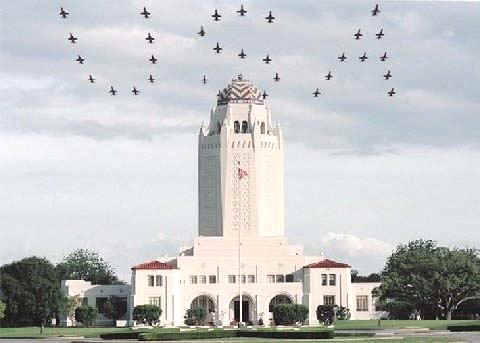
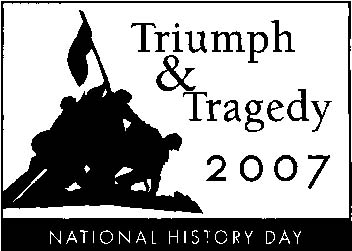
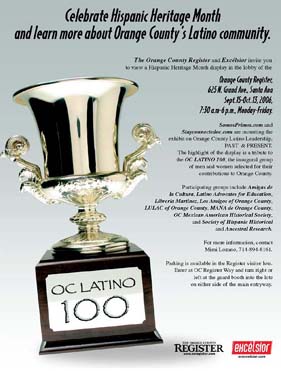

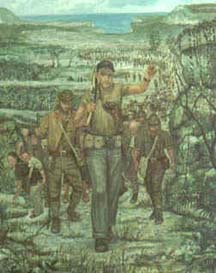 6. The Pied Piper of Saipan, Guy Gabaldon
6. The Pied Piper of Saipan, Guy Gabaldon 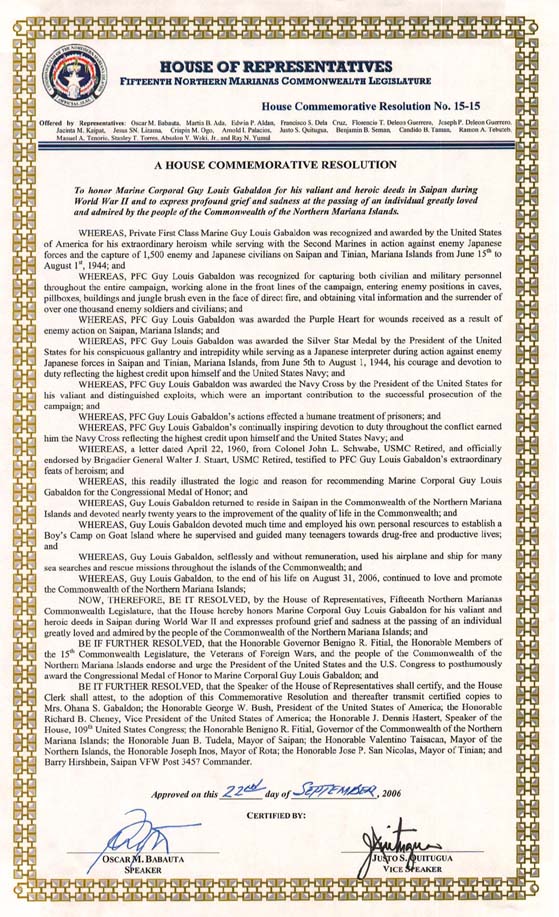
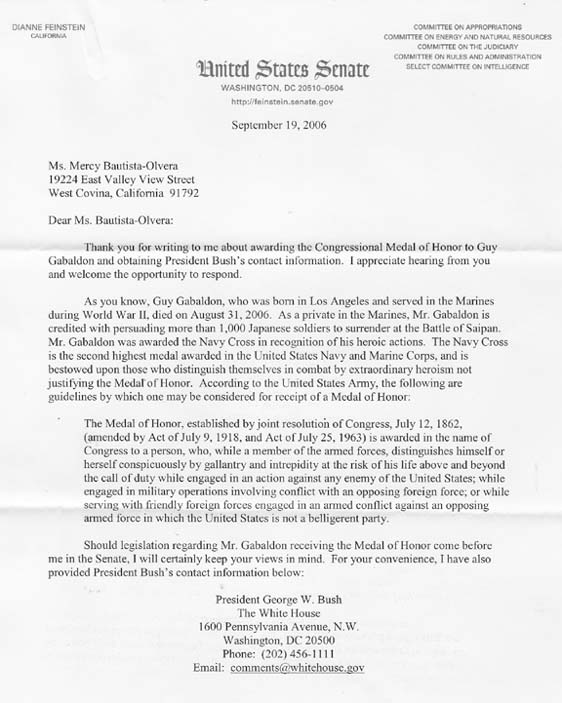
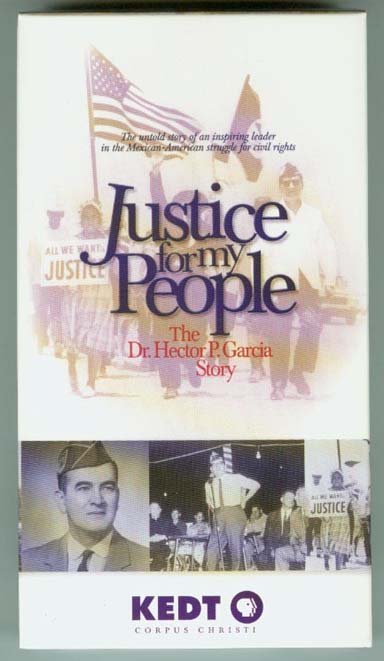 October 11,
2006
October 11,
2006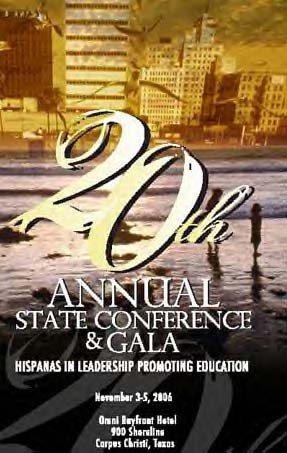
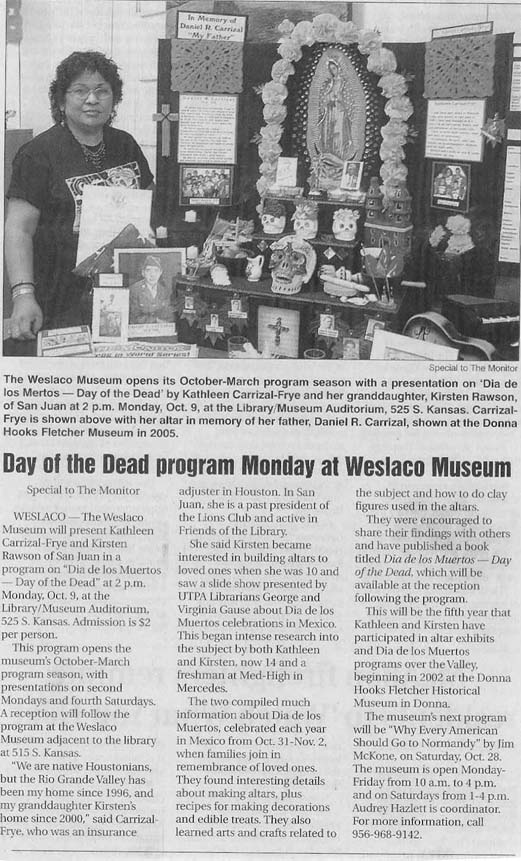
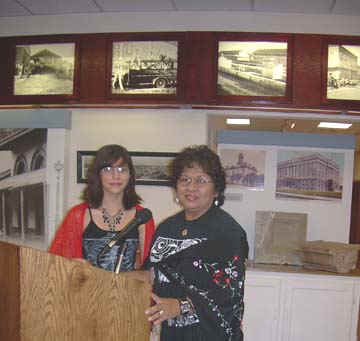 Kathleen Carrizal-Frye and her grand daughter Kristen Rawson were very busy in October doing presentations
in recognition of El
Kathleen Carrizal-Frye and her grand daughter Kristen Rawson were very busy in October doing presentations
in recognition of El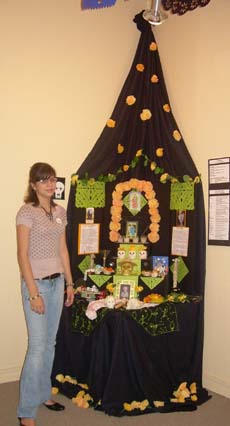
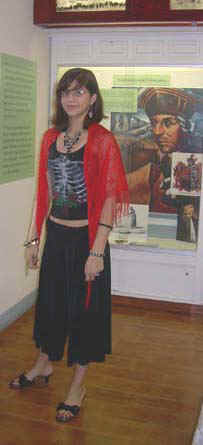
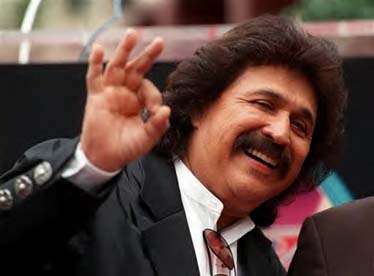
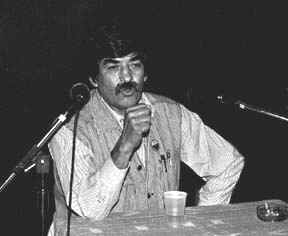
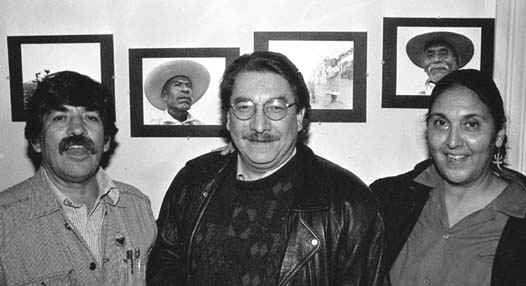
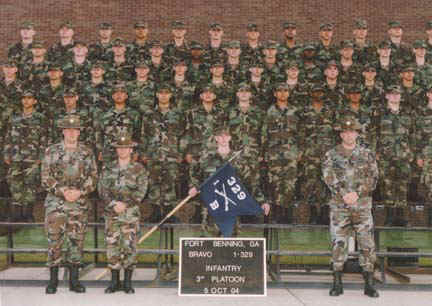
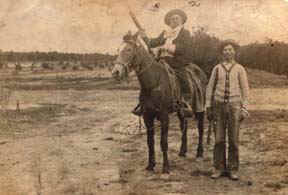 Joshua Gutierrez’s family history is at least 100 years old in the
United States. Joshua’s parents Alfred and Yolanda Gutierrez, and
grandparents Chico and Molly Gutierrez, were all born in Los Angeles,
California. His paternal grandparents Lorenzo and Petra Gutierrez.
Joshua Gutierrez’s family history is at least 100 years old in the
United States. Joshua’s parents Alfred and Yolanda Gutierrez, and
grandparents Chico and Molly Gutierrez, were all born in Los Angeles,
California. His paternal grandparents Lorenzo and Petra Gutierrez.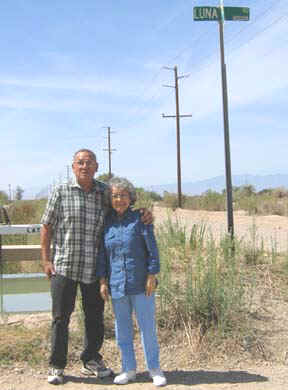
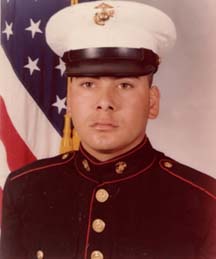
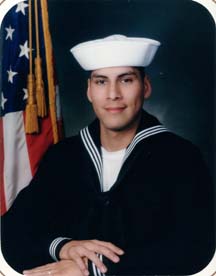
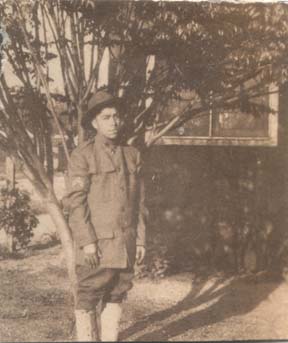 Joshua’s great grandfather Lorenzo
Gutierrez proudly served in the United States Army during World War I.
Joshua has several great uncles and cousins who also served proudly during
World War II, the Korean War, and the Viet Nam War as well.
Joshua’s great grandfather Lorenzo
Gutierrez proudly served in the United States Army during World War I.
Joshua has several great uncles and cousins who also served proudly during
World War II, the Korean War, and the Viet Nam War as well.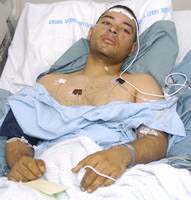
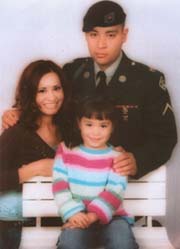 Gutierrez suffered severe injuries to both his
legs. He arrived at Landstuhl Regional Medical Center on Sunday. His
left leg is fractured, and a portion of his right leg had to be
amputated as a result of the blast. "It’s fine,"
he said. "I’ll deal with it."
Gutierrez suffered severe injuries to both his
legs. He arrived at Landstuhl Regional Medical Center on Sunday. His
left leg is fractured, and a portion of his right leg had to be
amputated as a result of the blast. "It’s fine,"
he said. "I’ll deal with it."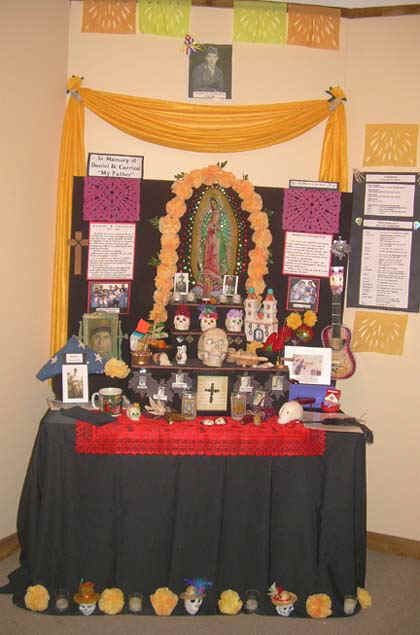

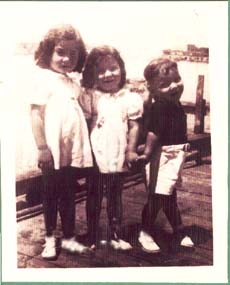 recall
the move itself, but I do remember that my sister, Lydia, and I got our
own room with brand new Jenny Lind twin beds. No more bunk beds. Hooray.
recall
the move itself, but I do remember that my sister, Lydia, and I got our
own room with brand new Jenny Lind twin beds. No more bunk beds. Hooray.
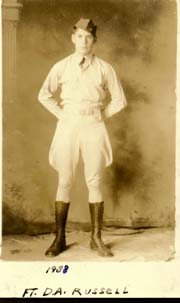 have to have popcorn at the movies. We would see cartoons, serials and
two feature films, and, of course, the Newsreels about the war far away
across the ocean. My favorite movies were always the Westerns, and
“Little Beaver” was my favorite character. He was an Indian boy,
about my age who got to run around wearing only a loincloth carrying a
bow and arrow. He always helped Red Ryder, the good Cowboy, get the Bad
Cowboys. Roy Rogers was another favorite. He was so handsome and sang
beautiful songs about the West. And, of course, his horse was big and
beautiful. “When I grow up I’m going to be a Cowboy” I would say.
And my sister always corrected me. “Cowgirl, she would say; you’re a
girl. “No,” I would respond, “a Cowboy. “ After the movies, we
would come home and I would play Cowboy and Indians with my brother
while my sister would play in the house with her paper dolls. “Why
can’t you be more like your sister” I often heard from my Mom &
Dad. It was a mystery to me too.
have to have popcorn at the movies. We would see cartoons, serials and
two feature films, and, of course, the Newsreels about the war far away
across the ocean. My favorite movies were always the Westerns, and
“Little Beaver” was my favorite character. He was an Indian boy,
about my age who got to run around wearing only a loincloth carrying a
bow and arrow. He always helped Red Ryder, the good Cowboy, get the Bad
Cowboys. Roy Rogers was another favorite. He was so handsome and sang
beautiful songs about the West. And, of course, his horse was big and
beautiful. “When I grow up I’m going to be a Cowboy” I would say.
And my sister always corrected me. “Cowgirl, she would say; you’re a
girl. “No,” I would respond, “a Cowboy. “ After the movies, we
would come home and I would play Cowboy and Indians with my brother
while my sister would play in the house with her paper dolls. “Why
can’t you be more like your sister” I often heard from my Mom &
Dad. It was a mystery to me too.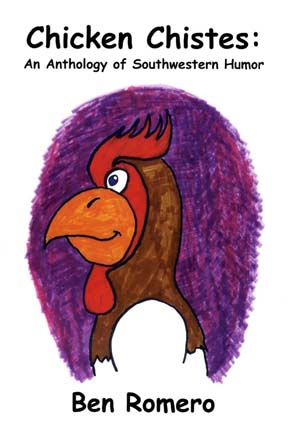 Chicken
Chistes, An Anthology of
Southwestern Humor
Chicken
Chistes, An Anthology of
Southwestern Humor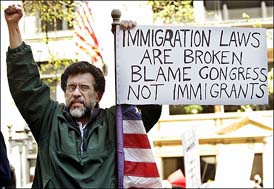 In America in the early 1900s Protestant law makers from Northern European heritage were the dominant force in government. They passed legislation on immigration based on the ascriptive characteristics like race, where they were born, what religion they practiced, and what language they spoke. In order to keep their hold on the power of the electorate the white Protestant elite made laws that strengthened their politics of nativism where they excluded citizenship to people from countries that did not match their Northern European roots. They hid their real agenda by waging media campaigns supported by writings by Anglo-Saxon academics who advocated that, "progress of civilization" decreased the need for unskilled labor from undesirable countries and that their presence in our society increased our national security by exposing us to class antagonisms and terrorism. What is happening today is really a replay of the same thing that happened 100 years ago. It all sounds so familiar. Back then they had people like Harvard economist Richard Mayo-Smith challenging the idea of the need for robust unskilled laborers from non Northern European countries. Today, we have Harvard graduate Lou Dobbs of CNN spewing his anti- immigrant harangues everyday. He has decided that Mexican immigrants should be his target and has veiled is racist arguments under the legitimate cloak that undocumented immigrants harm working middle class citizens and expose America to the threat of terrorism. Back in the early twentieth century they had Progressive sociologist Edward A. Ross who advocated a political doctrine that spoke of "simple minded immigrants" being used by, " big city bosses to neutralize the anti-machine ballots of an equal number of indignant intelligent American voters. " Today, we have Wisconsin Republican Congressman Jim Sensenbrenner who wants to deport millions of hard working undocumented immigrants and to build an iron curtain along our southern border with Mexico in order to keep out these undesirable twenty first century immigrants. He also wants to criminalize illegal immigrants and classify all those who aid undocumented immigrants as criminal smugglers, including family members, churches, employers and hospitals. In answer to Lou Dobbs argument that these immigrants are hurting the middle class working men and women of our country. AFL-CIO Union President John Sweeney said, "America's broken immigration system has allowed employers to create a low-wage labor pool of immigrant workers that is easily exploitable… when employers drive down wages and working conditions for one group of workers, they harm us all. The U. S. department of Labor, for example has found the poultry industry--- with a workforce split about evenly between African Americans and immigrants - was 100 percent out of compliance with federal wage and hour laws. The answer isn't to make immigrant workers here now disappear, or to turn them into felons, as the bill passed by the Republican majority in the House of Representatives would do. The answer is to deprive employers of the means to exploit them and lower work quality for all of us."
In America in the early 1900s Protestant law makers from Northern European heritage were the dominant force in government. They passed legislation on immigration based on the ascriptive characteristics like race, where they were born, what religion they practiced, and what language they spoke. In order to keep their hold on the power of the electorate the white Protestant elite made laws that strengthened their politics of nativism where they excluded citizenship to people from countries that did not match their Northern European roots. They hid their real agenda by waging media campaigns supported by writings by Anglo-Saxon academics who advocated that, "progress of civilization" decreased the need for unskilled labor from undesirable countries and that their presence in our society increased our national security by exposing us to class antagonisms and terrorism. What is happening today is really a replay of the same thing that happened 100 years ago. It all sounds so familiar. Back then they had people like Harvard economist Richard Mayo-Smith challenging the idea of the need for robust unskilled laborers from non Northern European countries. Today, we have Harvard graduate Lou Dobbs of CNN spewing his anti- immigrant harangues everyday. He has decided that Mexican immigrants should be his target and has veiled is racist arguments under the legitimate cloak that undocumented immigrants harm working middle class citizens and expose America to the threat of terrorism. Back in the early twentieth century they had Progressive sociologist Edward A. Ross who advocated a political doctrine that spoke of "simple minded immigrants" being used by, " big city bosses to neutralize the anti-machine ballots of an equal number of indignant intelligent American voters. " Today, we have Wisconsin Republican Congressman Jim Sensenbrenner who wants to deport millions of hard working undocumented immigrants and to build an iron curtain along our southern border with Mexico in order to keep out these undesirable twenty first century immigrants. He also wants to criminalize illegal immigrants and classify all those who aid undocumented immigrants as criminal smugglers, including family members, churches, employers and hospitals. In answer to Lou Dobbs argument that these immigrants are hurting the middle class working men and women of our country. AFL-CIO Union President John Sweeney said, "America's broken immigration system has allowed employers to create a low-wage labor pool of immigrant workers that is easily exploitable… when employers drive down wages and working conditions for one group of workers, they harm us all. The U. S. department of Labor, for example has found the poultry industry--- with a workforce split about evenly between African Americans and immigrants - was 100 percent out of compliance with federal wage and hour laws. The answer isn't to make immigrant workers here now disappear, or to turn them into felons, as the bill passed by the Republican majority in the House of Representatives would do. The answer is to deprive employers of the means to exploit them and lower work quality for all of us." 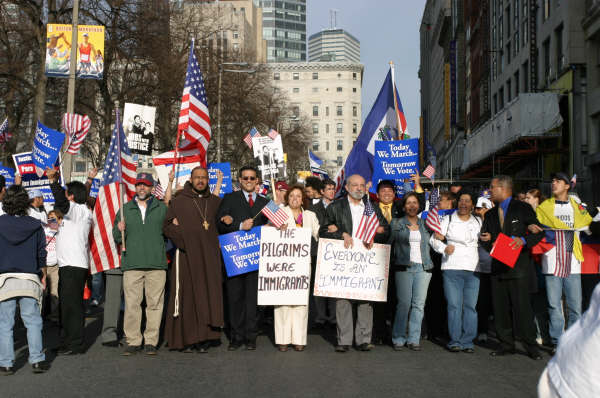
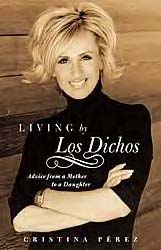 Advice
is one of the most valuable gifts a mother can give to her daughter.
Cristina Pérez turns to her mother's wisdom every day by reflecting on
the dichos she taught her. Here Cristina shares those that have
most powerfully influenced her life and translates them into solid advice.
Any woman looking for guidance -- whether she is about to leave for
college or is getting married -- will find what she needs with Cristina's
help. Dichos transcend age, race and religion to provide just the
right answer at just the right time. Most important, Cristina shows that
proudly embracing your roots and staying true to your identity will guide
you down the right path. Dichos have directed Cristina through the
toughest challenges and led her to success. Now let them lead you.
Advice
is one of the most valuable gifts a mother can give to her daughter.
Cristina Pérez turns to her mother's wisdom every day by reflecting on
the dichos she taught her. Here Cristina shares those that have
most powerfully influenced her life and translates them into solid advice.
Any woman looking for guidance -- whether she is about to leave for
college or is getting married -- will find what she needs with Cristina's
help. Dichos transcend age, race and religion to provide just the
right answer at just the right time. Most important, Cristina shows that
proudly embracing your roots and staying true to your identity will guide
you down the right path. Dichos have directed Cristina through the
toughest challenges and led her to success. Now let them lead you. 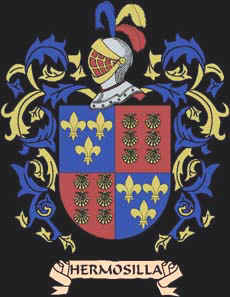
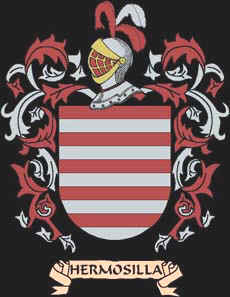
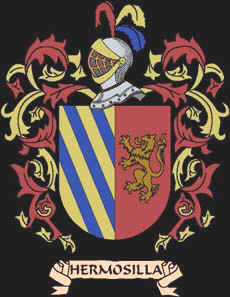
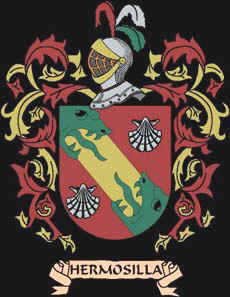
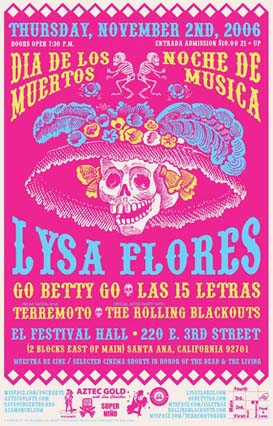
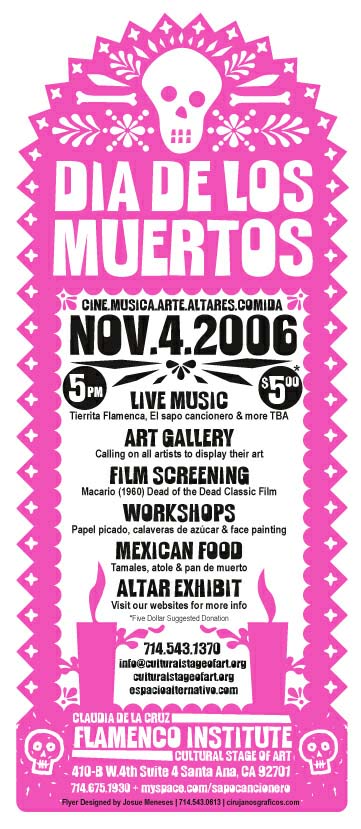
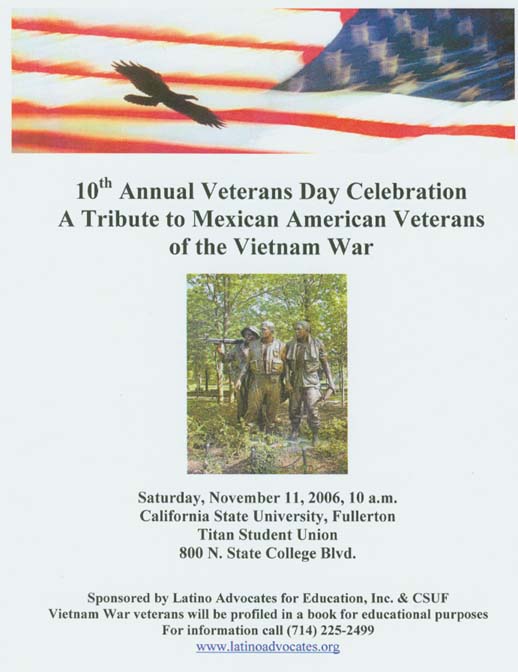

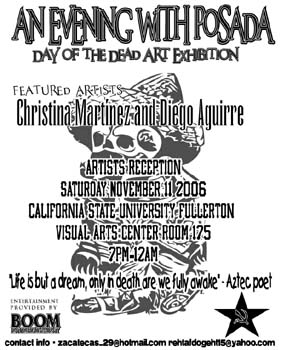

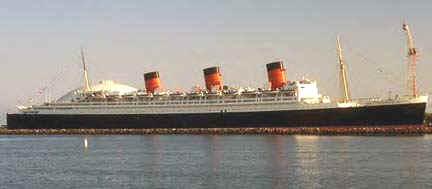
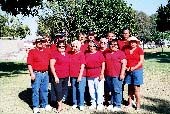
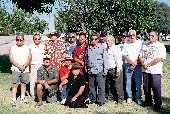
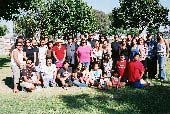
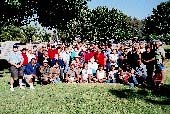
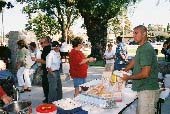
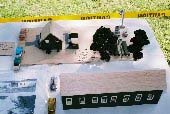
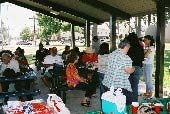
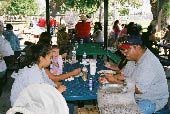
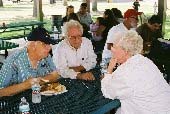
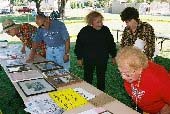
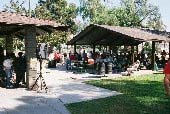

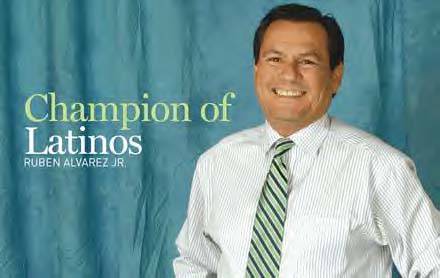
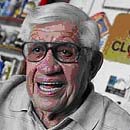
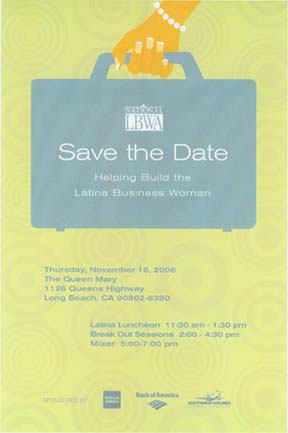
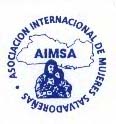 AIMSA, Asociacion Internacional de Mujeres Salvadoreñas
AIMSA, Asociacion Internacional de Mujeres Salvadoreñas 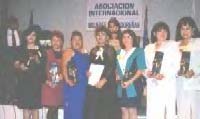 premio fue instituido a partir de 1996 a mujeres lideres de nuestra comunidad a mujeres que
sueñan, mujeres que luchan por sus derechos, somos el pasado somos el presente y somos el
futuro. AIMSA organiza, Capacita y fortalece liderazgo entre las mujeres haciendo asi un puente de respetuo mutuo entre las distintas organizaciones de las comunidades participando en sus
actividades.-
premio fue instituido a partir de 1996 a mujeres lideres de nuestra comunidad a mujeres que
sueñan, mujeres que luchan por sus derechos, somos el pasado somos el presente y somos el
futuro. AIMSA organiza, Capacita y fortalece liderazgo entre las mujeres haciendo asi un puente de respetuo mutuo entre las distintas organizaciones de las comunidades participando en sus
actividades.- 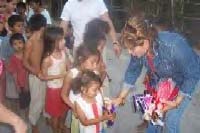
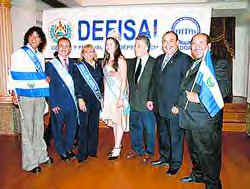
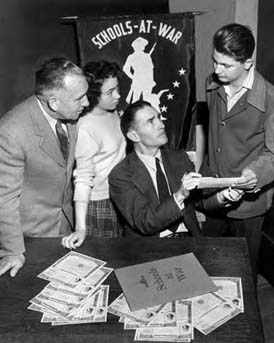
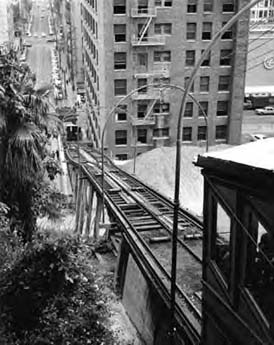
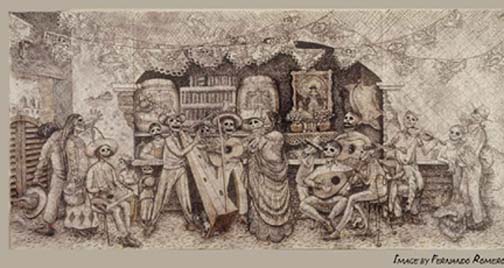
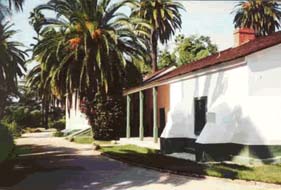 The rancho, once a 48,000-acre land grant given to Antonio del Valle in 1839, currently operates at 1,800 acres. Forty acres of the original grant, which includes all the ranch building and some agricultural land, was declared a National Historic Landmark in 2000. After the 1994 earthquake, a building constructed between 1853 and 1880, what docents call
The rancho, once a 48,000-acre land grant given to Antonio del Valle in 1839, currently operates at 1,800 acres. Forty acres of the original grant, which includes all the ranch building and some agricultural land, was declared a National Historic Landmark in 2000. After the 1994 earthquake, a building constructed between 1853 and 1880, what docents call 
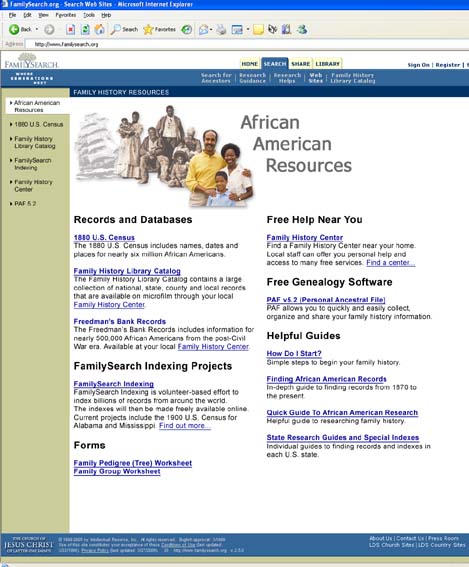
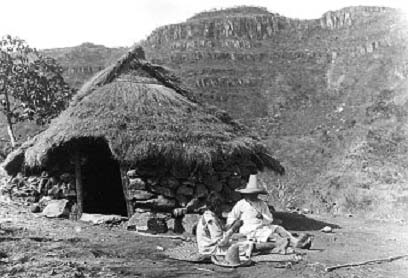

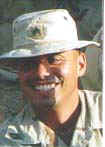 Army Sargeant Henry Ybarra III, SSN 455-39-2187 was the first soldier from Austin, Texas to be killed in the war in Iraq. He was killed in Balad, Iraq on September 11, 2003 while in support of Operation Iraqi Freedom. He was assigned to the Tech Supply Section of Troop 6-6 Cavalry, 11 Aviation Regiment. On September 11, 2003 SSG. Ybarra and three soldiers were changing a tire on a M977 Heavy Expanded Mobility Tractical Truck when the tire exploded injuring two soldiers and causing SSG. Ybarra’s death. While the incident may have been an accident, it is important to note that SSG. Ybarra was serving in a war zone and the procedures employed in changing the tire are an expedient method used under combat conditions. Being the good soldier that he was, he was doing his duty when he made the ultimate sacrifice.
Army Sargeant Henry Ybarra III, SSN 455-39-2187 was the first soldier from Austin, Texas to be killed in the war in Iraq. He was killed in Balad, Iraq on September 11, 2003 while in support of Operation Iraqi Freedom. He was assigned to the Tech Supply Section of Troop 6-6 Cavalry, 11 Aviation Regiment. On September 11, 2003 SSG. Ybarra and three soldiers were changing a tire on a M977 Heavy Expanded Mobility Tractical Truck when the tire exploded injuring two soldiers and causing SSG. Ybarra’s death. While the incident may have been an accident, it is important to note that SSG. Ybarra was serving in a war zone and the procedures employed in changing the tire are an expedient method used under combat conditions. Being the good soldier that he was, he was doing his duty when he made the ultimate sacrifice. 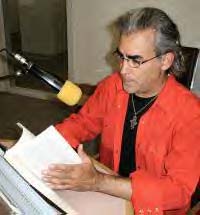 Between August 7 and August 18, 2006, Texas Public Radio presented on-air readings of the family memoir of San Antonio author John Phillip Santos,
Places Left Unfinished at the Time of Creation. The story, read by Santos himself, was broadcast on KSTX 89.1 FM. The chapters are archived on this page to listen online or download as MP3 files.
Between August 7 and August 18, 2006, Texas Public Radio presented on-air readings of the family memoir of San Antonio author John Phillip Santos,
Places Left Unfinished at the Time of Creation. The story, read by Santos himself, was broadcast on KSTX 89.1 FM. The chapters are archived on this page to listen online or download as MP3 files.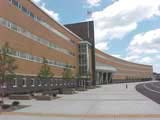 The
8th Annual Chicago Latino Book and Family Festival will again be well
timed for the important pre-Christmas and holiday shopping period. Our
home for the 7th Annual Chicago Latino Book & Family Festival will
again be Unity School, in the Town of Cicero, one of the most densely
Latino populated suburbs in the entire Chicago area. This venue has worked
exceptionally well for our 2004 & 2005 events with an average
attendance of 28,000. Continuing as co-host for the Chicago event is Tele
Guia de Chicago. See you there!
The
8th Annual Chicago Latino Book and Family Festival will again be well
timed for the important pre-Christmas and holiday shopping period. Our
home for the 7th Annual Chicago Latino Book & Family Festival will
again be Unity School, in the Town of Cicero, one of the most densely
Latino populated suburbs in the entire Chicago area. This venue has worked
exceptionally well for our 2004 & 2005 events with an average
attendance of 28,000. Continuing as co-host for the Chicago event is Tele
Guia de Chicago. See you there!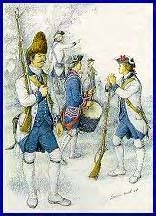 Initially established and manned by peninsular Spanish regulars in 1765 as an infantry battalion to occupy
Louisiana, acquired from France three years earlier, what would ultimately become the veteran and professional Regimiento de Infantería de Luisiana formed the core of Spain's military establishment in Louisiana and, later, in the Spanish Floridas until it faded into oblivion during the terminal period of Spain's colonial tenure in North America.
Initially established and manned by peninsular Spanish regulars in 1765 as an infantry battalion to occupy
Louisiana, acquired from France three years earlier, what would ultimately become the veteran and professional Regimiento de Infantería de Luisiana formed the core of Spain's military establishment in Louisiana and, later, in the Spanish Floridas until it faded into oblivion during the terminal period of Spain's colonial tenure in North America.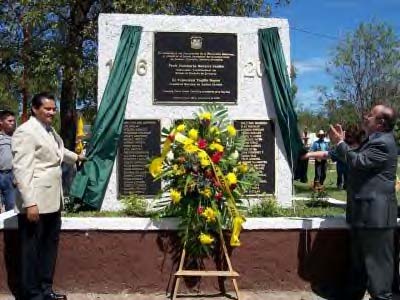
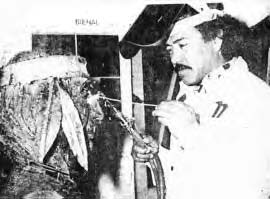 en 1987 me envió el propio pintor.
en 1987 me envió el propio pintor. Jose Leon Robles de la Torre, unveiling his
Jose Leon Robles de la Torre, unveiling his  Jose Leon Robles de la Torre
stands in front of the bronze bust, February 2006. The Bust was created by Sculptor and Artist Raul Ayala Arellano.
Jose Leon Robles de la Torre
stands in front of the bronze bust, February 2006. The Bust was created by Sculptor and Artist Raul Ayala Arellano.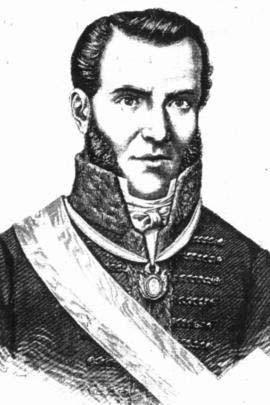 Personajes de la historia
Personajes de la historia